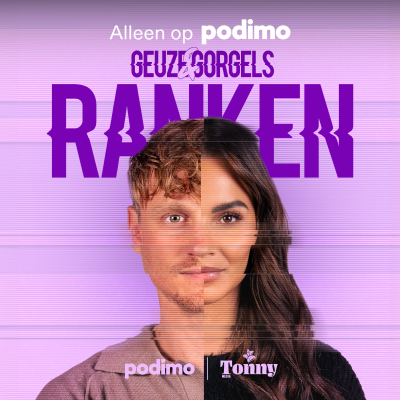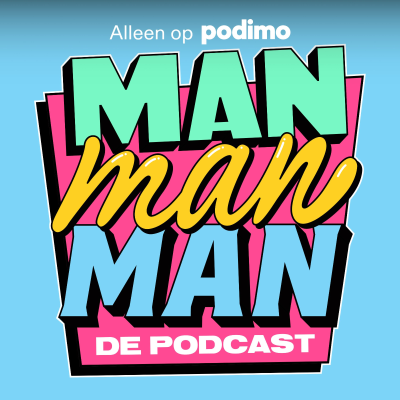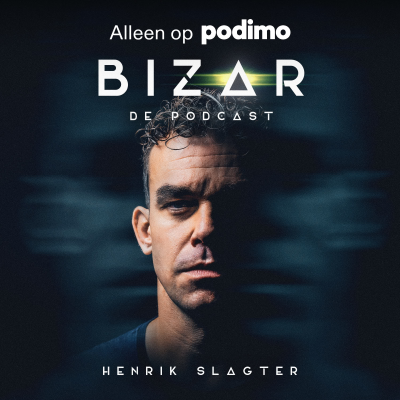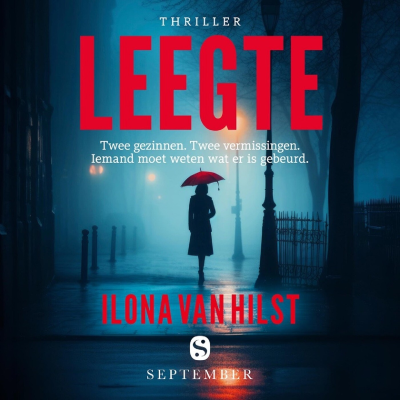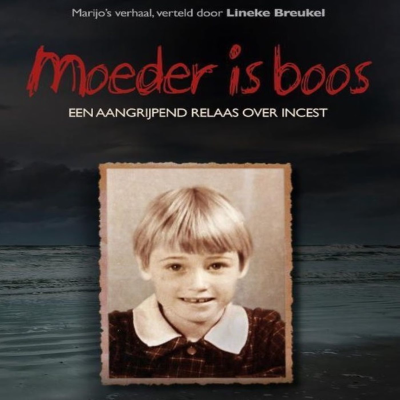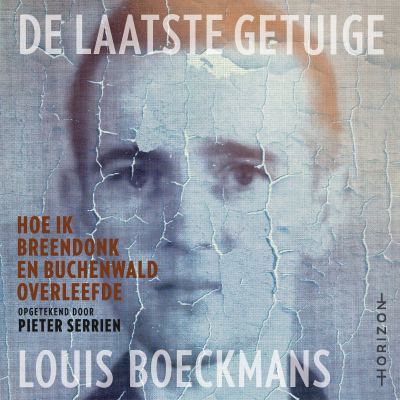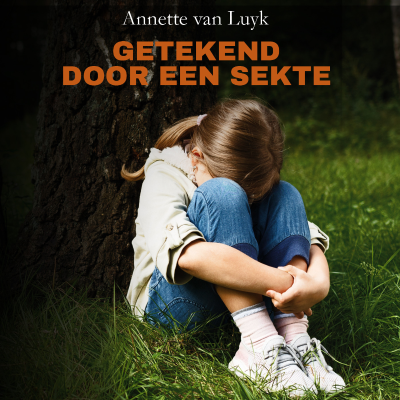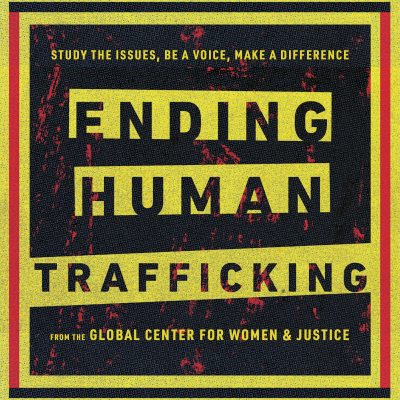
Ending Human Trafficking Podcast
Engels
Business
Tijdelijke aanbieding
1 maand voor € 1
Daarna € 9,99 / maandElk moment opzegbaar.
- 20 uur luisterboeken / maand
- Podcasts die je alleen op Podimo hoort
- Gratis podcasts
Over Ending Human Trafficking Podcast
The Global Center for Women and Justice launched the Ending Human Trafficking podcast in 2011. Our hosts are Dr. Sandie Morgan and Dr. Dave Stachowiak. Our mantra is Study the Issues. Be a voice. Make a difference. We believe that if you do not study first, you may say or do the wrong thing.
Alle afleveringen
367 afleveringen361 – Prevention Starts with Relationships, Not Programs
Chris Simonsen joins Dr. Sandie Morgan as they explore how communities can close the gap that makes young people vulnerable to trafficking—not with rescue mentalities, but with trauma-informed care, consistent relationships, and spaces where young people feel safe enough to stay. CHRIS SIMONSEN Chris Simonsen is the Chief Executive Officer of Orangewood Foundation, one of Orange County’s leading organizations serving youth who have experienced abuse, neglect, homelessness, and exploitation. With more than fifteen years at the helm and over three decades of executive leadership experience, Simonsen oversees a comprehensive continuum of care that includes housing, education, transitional support, wellness services, and specialized programs for youth who have been exploited or trafficked. Under his leadership, Orangewood has expanded its focus on intervention for children and Transitional Age Youth (TAY), emphasizing strategies that prevent revictimization, stabilize immediate crises, and strengthen long-term resilience. Simonsen’s leadership is shaped by a commitment to relationship-based, trauma-informed care and a theory of change rooted in the belief that consistent adult support, safe environments, and practical resources dramatically alter a young person’s trajectory. KEY POINTS * Orangewood Foundation made a strategic decision ten years ago to remove all labeling criteria for their programs, allowing them to serve any teen or young adult in need regardless of foster care status or county of residence, which caused the organization to grow from 40 to 250 employees. * The number one priority when working with vulnerable youth is building a trusting relationship and creating a safe environment where they feel comfortable, which can take weeks or months before meaningful goal-setting work can begin. * Young people without support structures are highly vulnerable to traffickers, and their trauma is so much more complex that Orangewood created dedicated programming including the Lighthouse transitional housing program and Project Choice drop-in center specifically for survivors and at-risk youth. * Prevention work must address the developmental realities of youth who haven’t had long-term stability or supportive infrastructure, including implementing social-emotional support in schools through programs like advisory groups that stay together for four years. * The role of loneliness and connection is critical—young people need to build their own communities and peer support networks, not just rely on organizational staff, to develop healthy relationships and long-term resilience. * For those wanting to help, the most effective approach is to support existing trauma-informed organizations through volunteering, donations, or collaboration rather than starting new nonprofits, and to get educated on what human trafficking really is before attempting direct intervention. * Schools need to dedicate more resources to the social-emotional aspects of teenagers’ lives, not just academics, and provide direct education to students about trafficking prevention at appropriate age levels without parental pushback. * The Ending Human Trafficking Collaborative led by the Samueli Foundation exemplifies how community education and cross-sector partnerships can strengthen prevention efforts by bringing together experts and philanthropists to direct resources where they’re most needed. RESOURCES * Orangewood Foundation [https://orangewoodfoundation.org/] * Samueli Academy [https://samueliacademy.org/] * Project Choice (Orangewood Foundation) [https://orangewoodfoundation.org/programs/project-choice/] * Lighthouse Transitional Housing Program (Orangewood Foundation) [https://orangewoodfoundation.org/programs/lighthouse/] * Ending Human Trafficking Podcast [https://endinghumantrafficking.org/] * Global Center for Women and Justice – Vanguard University [https://www.gcwj.org/] * Orange County Human Trafficking Task Force [https://www.ochumantrafficking.com/] * Samueli Foundation [https://www.samueli.org/] TRANSCRIPT [00:00:00] Chris Simonsen: The number one thing we have to do initially with any of our young people is build a trusting relationship with them. [00:00:07] Make them feel comfortable. [00:00:09] Delaney: When young adults don’t have safe housing, trusted adults, or a sense of belonging, prevention fails and traffickers step in to fill that gap. This episode explores how communities can close the gap, not with rescue mentalities, but with trauma-informed care, consistent relationships and spaces where young people feel safe enough to stay. [00:00:30] You’ll hear why prevention often starts long before exploitation is visible, and how schools, nonprofits, and everyday adults can be a part of the solution. Hi, I’m Delaney. I’m a student here at Vanguard University and I help produce this show. Today, Sandie talks with Chris Simonsen, CEO of Orangewood Foundation about how supporting transitional age youth and building community-based responses can reduce vulnerability to trafficking. [00:00:57] And now here’s their conversation. [00:01:06] Sandie Morgan: Chris, I am so grateful to have you on the Ending Human Trafficking Podcast. Welcome. [00:01:12] Chris Simonsen: Happy to join you, Sandie. It’s nice to be here. [00:01:16] Sandie Morgan: We have known each other a pretty long time, and I think one of the highlights in my career was when Orangewood and you in particular, gave me the Crystal Vision Award and I just want to do a thankful shout out for what that meant. So many of us have worked in this space for a long time, and we often do not stop to reflect on our achievements. [00:01:50] I have the feeling we need to find a way to give you that award. [00:01:56] Chris Simonsen: Well, who knows? Maybe that’ll happen someday after I’m retired. [00:02:00] Sandie Morgan: Oh, okay. Well we can’t let that happen too soon. So, let’s provide some context because we know each other well, but for our listeners here, what is the mission of Orangewood? [00:02:16] Chris Simonsen: Yeah, so Orangewood Foundation has been around actually 45 years, this year. And it started out with just one project, which was to collaborate with the county of Orange to build an emergency shelter for foster youth. At the time they had a facility, but it intermingled foster youth that were there on an emergency basis with probation youth. [00:02:41] And so it was quite confusing for these young children that were removed from their homes on a temporary basis to be mixed in with these other children that had committed crimes. So the director at the time, Bill Steiner, went to the county and said I’d like to create a separate facility to house these children that have been removed from their homes until we can find them a suitable placement. [00:03:07] So the county had a piece of land, but they didn’t have any funds to build the facility, so that’s when General William Lyon, who founded our organization, got involved and rallied the community to raise $8 million. And five years later they opened up the Orangewood Children’s Home and turned that over to the county to operate and run. [00:03:30] And they’ve been doing that ever since for the last 40 years. So then our board asked themselves, well, what more could we do? We’ve got all this momentum in the community and awareness around the challenges of foster care and child abuse that’s going on in the county. So they decided to start creating other programs. [00:03:52] And so we’ve been doing that over the last 40 years. We started with a scholarship program for former foster youth that wanna pursue higher education. And that’s a significant program because only about 60% of foster youth graduate high school and only about 20% attempt college and only about six to 8% finish college. [00:04:13] So one of the barriers for them finishing college is financial. So we try to assist them so that some of the things that maybe parents would provide a young adult as they’re going to college is something that we can provide them. And then we just continued to build on that. We created some transitional housing programs. [00:04:32] We run the county’s independent living program for teens in foster care. And when we moved to our new facility in 2003, we created a drop-in center for young adults that are struggling with homelessness or have any other needs. And that program has really grown and expanded to the point where we are serving over 1200 young adults in our drop-in center this year. [00:04:56] And about 10 or so years ago, we made a strategic decision to remove all the labeling of our young people. We had a lot of internal criteria of how young people could qualify for our programs. A lot of it around having been in foster care in Orange County, and that just really was not inclusive and we were turning away young people that really needed help. [00:05:21] So we did away with all of that criteria. And so today we just serve any teen or young adult in need. It doesn’t matter if they’re from Orange County or somewhere else in the state or even out of state. We’ve got a lot of resources to assist them and we want to be there for them. So that was a pretty fundamental shift for us, but I think a really smart and good one, and that has caused us to grow as an organization. [00:05:48] I’ve been with Orangewood 18 years now, six years as the Chief Financial Officer, and now 12 years as the CEO. And we had 40 employees when I started back in 2007, and now we have 250 employees between Orangewood Foundation and our charter school, Samueli Academy. So we’ve grown a lot, but more importantly, our impact has grown a lot. [00:06:11] Our programming and our resources to help young people has expanded dramatically. And that includes creating some specific programming around young people that are survivors of human trafficking or at risk of being trapped into that world. And so we were seeing young people coming to our programs, many of them from foster care that had been trafficked or were being trafficked because as you know, Sandie, young people without a support structure around them are highly vulnerable to traffickers. [00:06:47] So we tried to meet their needs in our Orangewood programming that we had at the time, but we quickly realized their trauma is so much more complex and their situations are more complicated, that we really needed to have dedicated programming to properly support them. So we created our Lighthouse transitional housing program for survivors of human trafficking, and that’s been in place since 2016. [00:07:17] And then more recently, about five or so years ago, six years ago, we opened up a separate dedicated drop-in center called Project Choice, and that is specifically there to support young people, ages 11 to 21, that are at risk of falling into the life of being trafficked or are currently being trafficked or survivors of trafficking and surrounding them with support and services to help them avoid that life or get removed from that life or create their own life as they go forward. [00:07:54] Sandie Morgan: So I’ve been along for the ride from almost the beginning of any of the anti-trafficking work and prevention, early intervention. So many questions are popping into my mind, but the principles that I want listeners to take away from this starts with what you said about taking away the labels and what we know recently right here in Orange County as a case study, our latest human trafficking task force report showed a full 50% of victims were minors. [00:08:42] I don’t like using the word minor. It dehumanizes and makes this a number game. But children and how we make the artificial cutoff for when you’re a child and when you’re an adult, really changes when you expand the age range to include transitional age youth. And so I’m curious with the understanding you’ve gained by removing labels, how do you see your interventions as redirecting. [00:09:24] It’s the whole issue we have in prevention is once they don’t go down that path, we don’t have a way of following up. We don’t know how many preventions, we only know how many actual victims. So can you address that early intervention and your strategies for preventing victimization or even revictimization. [00:09:55] Chris Simonsen: Sure. Yeah. One of the things that is required under our contract for Project Choice is to do community education and outreach. And so we do a lot of work with schools, in particular, their teachers and staff, to just get them more educated about what human trafficking is and what to look out for and signs that they might see in their students. [00:10:23] We are hoping to do more direct education for students where appropriate at the right age levels so that with all the social media avenues that they have to interact with people. As you know, Sandie, it’s much easier to have conversations with people that you don’t know because they’re behind a screen that can lead to disastrous results. [00:10:50] So we also run the county’s independent living program for teens in foster care. And so we hold workshops monthly on a variety of topics. But some of the topics that we focus on are directly related to prevention of human trafficking. How to behave, how to dress, how to act. Don’t over sexualize yourself the way you dress or act. [00:11:18] Those could send out the wrong signals. Healthy relationships, all of those things that when the education of the children in those areas don’t exist, they can easily be entrapped into a very damaging and awful relationship as we see when they come into our Project Choice drop-in center. [00:11:42] And they may be currently being trafficked and they are underage and that’s just horrible for us to see. And we wanna, our goal is to really put Project Choice out of business, right? We don’t wanna have to have a drop-in center for young people that are victims of these crimes. [00:12:05] So that’s our major focus there, really. And I think in talking about labeling too, I think it’s important and you know this obviously extremely well, but I think we’ve made a lot of progress in moving away from terms that were used in the past, like, oh, prostitution and things like that, and more towards victims and survivors. [00:12:32] And I think in changing that language, it’s helped the general public be more open to learning and understanding about this issue, how it’s impacting their community, and ways that they can get involved to help with the services and programs that are in that area. So before it was looked at as a crime and now I think we’re making good progress with the help of you and others to change the lens that people in the general community are viewing these situations. [00:13:12] Sandie Morgan: Well, and you’ve referred to some of the developmental realities of the kids that you see, and because of their gaps. Often they haven’t had the long-term stability. They haven’t had stable housing, for instance, they may have moved from school to school, and they just don’t have the supportive infrastructure around them. [00:13:43] So when they come to the drop-in center, how do you design services that make them come back over and over again in order to take advantage of those services? [00:14:01] Chris Simonsen: Yeah, I think the key for us is creating a safe environment for them. One where they can be themselves. We’re not gonna be judging them, and we don’t need to get to work right away when they come to see us. The number one thing we have to do initially with any of our young people is build a trusting relationship with them. [00:14:25] Make them feel comfortable. A lot of them, like you said, they had such instability in their childhoods and teenage years. They don’t know what trusting healthy relationships are. They’ve had a lot of adults abandon them or have had other adults making decisions about their life. [00:14:46] Where they go to school, where their placement’s gonna be, who they’re gonna live with, that they really just have a general distrust for adults, and so our goal is to get them to feel comfortable with us, and that doesn’t happen overnight. Sometimes it could take weeks or months, but eventually when they feel safe and secure, then we can start working with them on their goals. [00:15:12] It’s not what Orangewood Foundation thinks is best for them. Of course we’re gonna offer our opinions and guidance like any parent would do for their child, for example. But we wanna know what is it that you need from us? How can we help you? How can we walk alongside you? [00:15:31] And if we can start with some small goals first, creating safety plans, for example, or trying to identify are there any consistent adults that have been in your life? And it might not be family members, it might be a coach or a teacher or someone, somebody that, some relationships that you can latch onto, that you can start building a social network of your own in the adult community that can help you. [00:15:59] And so for some people, unfortunately, there aren’t people like that and they rely heavily on our team and our staff. But our goal is to get those relationships developed because they can’t obviously rely on our organization for their entire life. They need to build a life of their own with a support network that can be there for them. [00:16:23] Sandie Morgan: Starting with that foundation of a safe space. I think too often, wonderfully well-intentioned people start with, okay, I’m gonna teach you financial literacy, and good decision making, all of this, and the young person is just thinking what will be my quickest exit if this all goes wrong? And as I’ve worked with survivors over the years and we do a Survivor Gap scholarship, and when I’ve had a student sitting in my office trying to explain why she could not do her homework because she had lost her housing and was now in a homeless shelter where she was concerned because of the open sleeping arrangement and could not focus. [00:17:14] So we get things out of order. We all need to go back to our first year freshman psych class and look at Maslow’s hierarchy and that safety foundation and being accepted and feeling safe gives us a foundation for more long-term outcomes. [00:17:43] I wanna ask about how you particularly, because I’ve heard you speak passionately on this, and one statement I wrote down years ago, and it’s come up in other conversations was the role of loneliness and connection, and can you explain where that comes from and why you’re so passionate about being the answer? [00:18:15] Chris Simonsen: Well, I think personally because I am such an outgoing, extroverted person and love meeting people and building relationships, it just really pains me when I see young people coming to our drop-in center, for example, that have nobody, they have no meaningful relationships and they just feel like they’re fighting this battle by themselves. [00:18:39] And everybody needs to have a community. And I think that’s one of the things that Project Choice and our general drop-in center do is it shows these young people that, hey, I’m not alone. There’s other people that are facing the same struggles as I am. And there’s a lot of peer support, not just in saying, hey, I’ve been here for a while. [00:19:03] I’ve been working with Orangewood Foundation. They have the right approach. They have their hearts are in the right place. Just give it some time. That’s important. But if they can also develop a community within their peers just for support and getting through some of the struggles they might have, whether it’s schooling or jobs, et cetera. [00:19:25] That’s just so important, and that’s why our Lighthouse Transitional Housing program has seen a lot of success because we have a group of young people living under one roof. And they don’t live in isolation. They build their own community. They do things together and when you’ve been in situations that are unhealthy relationships, whether that’s growing up in foster care or being trafficked, to actually then be put into a situation where you can build healthy relationships. [00:19:58] It’s a little foreign to them at first, but then they see the value in having friends, having peers, having a support group that they can relate to, they can talk to that have walked in their shoes. And so that’s a big part of what we do. Once we get them comfortable, like I said, we wanna try to help them build that network and we can be part of that, but we can’t be the exclusive members of that community for them. [00:20:28] And it’s just so important to have people that you can trust and talk to. And unfortunately for these young people that have been trafficked or coming out of trafficking, so many people have told them what to do for so many years. They haven’t made a lot of their own decisions over the time. [00:20:53] So even just who to pick to associate with and get to know, it can be scary for them ’cause their trust has been violated so many times. And yeah, so it’s just something that we really focus a lot on as our first step. Like you said, you don’t wanna get things out of order. [00:21:13] If you start pushing someone to try to accomplish these tasks before they’re ready or even get to know you as a person or an organization, they’re just gonna say, oh, this is just like any other place that I’ve been to and trying to tell me what to do. They don’t listen to me. I mean, really, for us, it all starts with what’s best for the youth and what does the youth want. [00:21:39] Sandie Morgan: So they’re empowered to create their own community there. When you said the word safe community, it reminded me of a project our Vanguard students are doing now that’s called Safe Community, Safe Kids, and people often listen to that nice, catchy title and think we’re putting together teams of adults to be around the kids. [00:22:04] We’re not, we’re equipping young people, middle schoolers, high schoolers, to create their own safe community. They’re the ones who understand the pressures that they experience in their social setting, they share with each other their challenges, perhaps in a home environment or in another situation. [00:22:30] And they have similar experiences and they can lean on each other. And Project Choice creates. I did some evaluation work years ago that included Project Choice and one of the most memorable conversations that I had, Chris, and I probably should have told you because it’s such a great story. When I had to do a focus group online, because we couldn’t do it in person, the kids who showed up surprised everybody because they were so eager, they were lonely, and now we had a space. [00:23:14] To meet and a reason because they were participating in a focus group and their concerns and support for each other were visible. I remember one student saying to another, so are you still doing your community college classes? So they were better than the adults around them, who sometimes we come off with a checklist mentality, oh, these are the things I need for this kid, so I’m checking ’em off here. [00:23:49] And that isn’t the same feeling that you get when you’re part of a community like the kids really were in that Project Choice group. [00:24:03] Chris Simonsen: Yeah, we really emphasize a lot of group discussion and I don’t wanna call it group therapy, but just workshops and getting the young people together instead of working with them individually all the time, there’s a lot of power in being in the same room with your peers and hearing everyone else share. [00:24:27] And not only are they getting to hear from them, but they’re demonstrating, hey, I’m willing to share ’cause this is a safe place. So if you don’t feel embarrassed or don’t feel like you can’t share, if you’re having a struggle that you wanna talk about, and we, Project Choice has every month we’ve got drumming circles or art therapy or equine therapy, or just going out hiking things that [00:24:54] Sandie Morgan: I’ve been there when they’re all in the kitchen cooking. [00:24:57] Chris Simonsen: Right? [00:24:58] Sandie Morgan: Yeah, it’s so like, I feel like I belong. [00:25:01] So here’s the thing. The people out there listening to this may not have the resources that Orangewood has because you’ve spent 45 years building this very comprehensive approach. [00:25:17] So what are the two or three things that must happen for a group that wants to be available and do good work that is also best practice oriented that is going to support the most, the youth who are the most at risk. [00:25:38] Chris Simonsen: Yeah, I think what you just said there is the key. There’s a lot of people out there that wanna rescue survivors and they don’t take a trauma informed approach to the work that they’re doing, and that can cause more harm than good. And so if you’re really, truly interested in having an impact in this area, I would suggest finding an organization that is doing work already and seeing how you can support them. [00:26:11] Frankly, we have too many nonprofits in this country and a lot of ’em are very small and inefficient, and people have good hearts and they mean well. But if we could combine forces and collaborate more, the impact can be much greater. And so now if that’s not something that somebody wants to do and they really want to do it on their own, I would suggest that they get very educated on the topic of human trafficking because there’s a lot of misinformation out there and misconceptions, and you have to really understand what the problem is before you can try to solve it. [00:26:38] And you need to be educated. And so I think that takes some time and effort to talk to experts like you and others to say, well, how does this problem exist and why? Why is it in every large community that we have in the state and in the country? And then what are the true needs and figuring out how you can help. [00:27:05] Unfortunately, a lot of people want to interact with the survivors and they want that interpersonal connection, and they wanna build a relationship. They wanna mentor them. Well, that’s not usually what they need, and maybe writing a check or cooking meals in the kitchen isn’t as glamorous as a way of giving back that maybe your perception is. [00:27:29] But it’s so important, it’s so critical, and it adds a lot of value to our organization when people want to get involved in that way. The task force that we’re a part of headed up by the Samueli Foundation, I think is a great example of people that are passionate about this issue. They wanna get involved. [00:27:56] Just educating the broader community about this issue does exist in our community, and by us not addressing it, it makes our community worse off. And I think we’re still in that phase of this societal issue where there is a lot of education that’s still needed, so maybe people can educate different community groups or give presentations and that’s very helpful. [00:28:39] Sandie Morgan: And that example of the collaborative to end human trafficking that we both belong to, it has been a model of looking ahead and inviting other organizations into that collaborative space. And you’ve already started to address my focus as we look ahead to the kinds of innovations and collaborations that will most strengthen our communities. [00:29:12] You’ve already mentioned don’t start your own nonprofit, join, collaborate, go alongside, strengthen what’s already there. What else do we need to do to change the trajectory of students. We started this show with the report that in Orange County, now our victims are 50% minors. Those are children and we aren’t doing enough to make sure that they are safe. [00:29:50] Chris Simonsen: Yeah, I think the social emotional aspect of a teenager is something that our schools need to focus on and take an interest in and dedicate resources to. At our public charter school, Samueli Academy, we do that. We look at the whole student. It’s not just their academics. We have to support their other social emotional needs. [00:30:16] And so we have a full-time clinical psychologist on staff. We have support staff for her, and she has a small team there. We also have what’s called advisory period, which getting back to building a community with your peers, when you enter our high school in ninth grade, you are assigned an advisory group. [00:30:38] Like homeroom for us older folks or homeroom, but [00:30:43] Sandie Morgan: I remember my homeroom friends. [00:30:46] Chris Simonsen: The difference is you have 15 people in your cohort, in your advisory group, and you stay with that group for four entire years with the same teacher moderating that advisory group. And actually at our graduation ceremony, it’s the advisory teacher that announces every student that’s in their advisory class as they graduate. [00:31:07] So that group spends a lot of time every week and we have a separate period for advisory a couple times a week to talk about other things outside of academics, what’s going on in the world, issues like bullying, social media, human trafficking. We’ve had our students at our school do PSAs around human trafficking in the month of January to help build awareness. [00:31:32] So I think there’s a big role for schools to play in educating their students about those societal issues that they are vulnerable in being approached and potentially lured into. It’s not gonna be a vast majority of the students, but everyone matters that we prevent from getting entrapped into these situations. [00:32:03] And so it’s a big focus for us at our school and I would hope that we could get our schools to dedicate more time and energy and resources to those other topics. [00:32:14] Sandie Morgan: To your point about how often volunteers and nonprofit leaders want to actively have one-on-one relationships with survivors and victims. But if we are truly committed to prevention, then we’re going to be doing the things that support prevention, the more integrated approach that Orangewood uses with housing and mentorship and wellness. [00:32:48] And that means coming along. So I’ve talked to, for instance, schools in my area that would love to do some of the activities that we do at Samueli Academy, but they don’t have the resources. So what if your organization came alongside one school to make sure that they could do those projects that build into the confidence and the sense of belonging for a young person? [00:33:22] Chris Simonsen: Yeah. No, you’re absolutely right. I mean, that’s something that we do in Project Choice to an extent. We have a contract with the Fullerton School District to, like I said, educate some of their staff and teachers, but we are gonna be moving to evolve into direct education in the area of prevention with their middle schoolers especially. [00:33:49] And so we’re excited to move into that area of prevention. Right now we’re more in the education of the general population or mandated reporters, but the next step is to really provide some education to the students that are the potential victims themselves. And I think we’re at a point now where we can do that without parents getting in an uproar. [00:34:19] What are you talking about? Teaching, talking about prostitution and things like that. I think there’s enough that’s been done where we aren’t gonna have those roadblocks like maybe we had 10 years ago when trying to talk about these topics in school. [00:34:37] Sandie Morgan: Yeah. Okay. So we’re gonna have to continue this conversation and see how that goes. [00:34:43] Chris Simonsen: Okay. [00:34:44] Sandie Morgan: I’m gonna hold you to that. Thank you so much, Chris, for joining me today. And I value so much our opportunity to collaborate and I’ve learned so much from you. And I am grateful for Orangewood here in Orange County. [00:35:03] Chris Simonsen: Well, Sandie, I appreciate our friendship and you were a very deserving honoree for our Crystal Vision Award. You’ve been a staple in our community here leading the charge around human trafficking and support for survivors, and you’ve helped educate us and mold our programming here so that we’re doing the right work in the right way. [00:35:26] So our partnership is something that I value a lot and there’s more work to do and we will continue to do that together. [00:35:34] Sandie Morgan: And we will put links to the projects that you’ve got in our show notes and people please take advantage of learning from the experiences at Orangewood. Thanks, Chris. [00:35:49] Chris Simonsen: Thank you, Sandie. [00:35:50] Delaney: Thank you to Chris Simonsen for the practical challenge he shared. If you want to help, don’t rush in with a rescue mindset. Get educated, support, trauma-informed organizations already doing the work, and strengthen what’s working through collaboration. That is a concrete way communities can close the gap that makes young people vulnerable. [00:36:13] Listeners, if you love this conversation, make sure you check out our website at endinghumantrafficking.org [endinghumantrafficking.org] for tons of in-depth show notes and other resources. If you’d like to help us grow this podcast, you can start by sharing this episode with somebody and connecting with us on Facebook, Instagram, or LinkedIn. [00:36:30] As always, thank you for listening.
360 – Healing Through Community
Priscilla Ward joins Dr. Sandie Morgan as they explore how true healing happens not through fixing or rescuing, but by learning to sit in discomfort, lead with curiosity, and create consistent communities where survivors can feel safe enough to begin their journey at their own pace. https://www.youtube.com/watch?v=FFWfVaeCALg PRISCILLA WARD Priscilla Ward, LCSW, is the Founder and Clinical Director of Compass Rose Psychotherapy in Fullerton, California. With over 18 years in the helping profession and 15 years of clinical experience, she has dedicated her career to supporting youth, young adults, and families through trauma, anxiety, substance use, and grief. A graduate of the University of Southern California with a Master’s in Social Work, Priscilla brings extensive experience from nonprofit agencies, community mental health clinics, correctional facilities, and school-based programs. She has led mental health teams for the Orange County Department of Education, developing trauma-responsive programs and training professionals in high-stress environments. Her bilingual Spanish fluency and cultural responsiveness make her a trusted ally across diverse communities. Beyond direct practice, Priscilla serves as a consultant and trainer, equipping educators, faith leaders, law enforcement personnel, and mental health professionals with trauma-informed, harm reduction, and motivational interviewing frameworks. KEY POINTS * People heal in community and relationship, not in isolation, and this healing process is rarely linear—it’s complex and messy, especially for those who have experienced trauma. * The shift from “what’s wrong with this person” to “what happened to this person” is foundational to trauma-informed care and creates space for dignity and compassion over judgment. * Harm reduction is a philosophy grounded in meeting people where they are, honoring their dignity even when they aren’t ready to stop certain behaviors, and recognizing that small steps matter because keeping people alive and safe creates opportunities for future healing. * Faith communities can love people well by learning to sit in discomfort and resist the urge to fix or rescue, instead focusing on building belonging without requiring behavioral compliance as a prerequisite. * Understanding the stages of change (pre-contemplation, contemplation, preparation, action, maintenance, and sometimes relapse) helps helpers meet survivors appropriately at each stage rather than imposing expectations they’re not ready for. * Secondary trauma and burnout are real costs of caring, and taking care of our own wellness is critically important because we need to be healthy people in the room to truly serve others without reinforcing harm. * Trust is the bridge for change, and consistency creates safety that literally rewires the brain—centering connection over correction leads to systemic change in how we support survivors. * Listening to voices of lived experience is essential; helpers should ask “what do you need” rather than assuming they know what survivors need. RESOURCES * Compass Rose Psychotherapy [https://compassrosepsychotherapy.com] TRANSCRIPT [00:00:00] Priscilla Ward: what harm reduction looks like in my community might be very different than yours, but the spirit of harm reduction can be applied anywhere and everywhere. [00:00:11] Delaney: You know that uncomfortable space where things aren’t neat or solved, what if that’s where the real healing starts? Today’s conversation leans into that gray area. The space where our instinct to fix meets the deeper need to simply be present. [00:00:25] When we let go of control and step into curiosity, we make room for safety, dignity, and real connection. That kind of community can change everything. Hi, I’m Delaney Mininger. I’m a student here at Vanguard University and I help produce this show. Today, Sandy talks with Priscilla Ward, a licensed clinical social worker who trains faith leaders and community teams in trauma-informed care and harm reduction. [00:00:51] And now here’s their conversation. [00:00:53] [00:00:59] Sandie Morgan: Priscilla Ward, I am so excited to have you here at the ending Human Trafficking Podcast. Welcome. [00:01:08] Priscilla Ward: Thank you. I am very excited to be here. [00:01:11] Sandie Morgan: Well, you and I have served together on the Faith-Based Action Committee for our Orange County Human Trafficking Task Force for a very long time, and we’ve been having this conversation offline and decided it was time to bring it to the podcast. So let’s dive in. [00:01:34] Priscilla, you’ve spent nearly two decades helping individuals and families navigate trauma, anxiety, and loss. What have you learned about people and what they need most in their healing journey? [00:01:50] Priscilla Ward: Great, great and loaded question. I think probably the top thing that I have really taken away from all of the work that I’ve done is that people heal in community. We heal in relationship. Connection is a critical part of the process of the journey, but connection and relationship have a lot of complex elements that are required to really happen. And sometimes it doesn’t look linear. In fact, most of the time it’s not linear at all. It’s very complex. It’s very complicated, especially when we are truly serving those that have been through and are actively going through really challenging, traumatic, tragic things. [00:02:46] Sandie Morgan: So when you talk about healing happens in community, particularly in the faith-based community, we want to welcome in survivors of any kind of abuse. But we’re talking especially about human trafficking today and sometimes our faith communities have a lot of rules really that make the belonging piece a little challenging. [00:03:21] We have the belief piece in place. We all trust God, but the behavior to follow what the community sees as very standard and what is acceptable behavior. And so that kind of a community context for someone who is just starting to engage in a healing journey can be a very challenging circumstance for the survivor, the victim, and for those of us who have really good intentions. [00:04:11] So how can trauma informed practices move beyond therapy rooms and begin shaping our systems, our faith communities? Our schools, our correctional settings, those are the places that survivors encounter every day. [00:04:31] Priscilla Ward: Yeah, absolutely. And I think you’re right. There’s so many structures and expectations that exist in so many environments, including faith-based communities. And the huge shift that really needs to happen internally is understanding that our goal of fixing or rescuing is part of what needs to change. [00:04:58] When we are in service of others, we are not necessarily need to be focused on chasing an outcome. It’s about being in service of somebody who’s hurting in whatever way, and learning to sit in our own discomfort, learning to sit in the messiness, learning to sit in the gray. So much of a prerequisite of belonging for Jesus was not compliance, was not behavior change, and it’s learning to lead with that even when we are uncomfortable. The reality is that oftentimes we approach things with this lens of what’s wrong with this person. When we see a behavior, an action, something that we deem is wrong or bad, what is wrong with them, and making the shift to internally ask ourselves what happened? [00:05:54] What happened to this person? What happened in their life? What happened in their childhood? That this is the way that we are seeing them. This is the way that they are showing up and finding that deep compassion, even when it is messy, even when it’s uncomfortable. And we can apply these principles to every setting, whether it’s corrections or social services or a church learning to lead with that heart of what happened to this person and where can I find that opportunity to connect? [00:06:27] Where can I really center dignity and compassion and meet them where they are. That’s the beginning of building belonging for folks. [00:06:39] Sandie Morgan: So when you talked about us approaching this as we’re gonna fix it, and so when you talked about approaching with what’s wrong with this person, I finished that sentence in my head with and how can I fix it? I’m a firstborn daughter. My job is to fix stuff for the people around me and my siblings. [00:07:11] And that fix it mentality is not going to be helpful. It reminds me of a podcast I did with Stephen Kin from Project Kinship. Yes. And they have a motto on the wall that says, we don’t save people. We serve people, and I think that’s the beginning of developing this attitude of what happened and how can I serve on your healing journey? Okay, so let’s talk about that trauma-informed faith and introduce a topic that sometimes a little uncomfortable in faith communities, whether we’re talking Christian or Muslim, where we have strong context for behavior expectations. [00:08:16] So you frequently train faith-based organizations on trauma and harm reduction, and so how do you approach those conversations? [00:08:31] Priscilla Ward: I think it’s really important for us to connect and where we overlap. So what do we all agree on? We all agree that it’s important to serve people, to take care of people. We wanna do good. We wanna love people. And I add the element of these conversations, the trauma-informed care conversation, the harm reduction conversation is us taking that one step further. [00:09:00] I don’t believe it’s enough to love people. I believe we have to learn to love people well and learning to love people well requires us to step out of our box and learn things that are sometimes uncomfortable. But if me learning about trauma informed care, if me learning how to embody that, if me learning about harm reduction is going to help me love you well, then we’re living out our purpose. [00:09:28] Sandie Morgan: Okay, so let’s get down to basics. What is the definition of harm reduction? [00:09:38] Priscilla Ward: Harm reduction. So like you mentioned, this can be a sticky topic and sometimes there’s some pictures that immediately come to mind. But before I start talking about even any examples, I think it’s so important that we are really grounded in the fact that harm reduction is far more than a list of strategies. [00:10:02] It is, it’s truly a philosophy that’s grounded in a set of principles that at its heart is about meeting people where they are. It’s about honoring their dignity, even when they aren’t ready or able to stop certain behaviors, and it takes a pause to really acknowledge that abstinence isn’t always realistic or accessible, and small steps, any small steps, they count, they matter. Our goal with harm reduction is literally just what it says, harm reduction. It is to reduce harm because if we can reduce harm, whether it is a critical injury, a critical illness death, that means that we have an opportunity to help people move along in their journey. If they’re not here [00:10:56] we can’t help them. And that’s the goal of harm reduction. It’s also a starting point. It’s not the end all be all. There’s a lot of other elements that need to exist for folks to be whole on their journey of healing. But harm reduction is an incredible starting point because it does allow us to center that dignity. [00:11:24] That compassion, autonomy, which is so important when working with survivors, and really focusing on reducing the risks rather than eliminating them entirely. And that’s part of that shift rescuing or from saving and really learning that this can look different in every context, what harm reduction looks like in my community might be very different than yours, but the spirit of harm reduction can be applied. Anywhere and everywhere. So thinking about examples, I think sometimes we have these big scary examples that come to mind, like syringe exchange programs or safe use sites. [00:12:10] Sure, those are some examples of harm reduction, but there’s so much more. So I like to remind people, if you brushed your teeth this morning, that’s harm reduction. If you wear a seatbelt, that’s harm reduction. So those are examples that are not all the way in, you know, that far end of the spectrum. [00:12:29] And that’s important to remember. There is a spectrum. We all fit in a different part of the spectrum. [00:12:36] Sandie Morgan: And I think back to my personal experience and my life in another country. When I was in Athens, Greece, I worked with various nonprofits that reached out to victims of human trafficking. And in my basket when we went out to engage mostly girls on the street who are victims of human trafficking and have all the elements of human trafficking, force fraud and coercion almost always. [00:13:21] And so in my basket, I’ve got cookies. I have a thermos of hot water to make tea or coffee, and I have condoms. [00:13:32] Priscilla Ward: Mm-hmm. [00:13:33] Sandie Morgan: And when some of my friends went out with me, they’re like, you’re giving out condoms. And it’s like, well, you know, I care about these girls. I see some of the same girls week after week. I just want them to be safe, and if that’s what I have to do, that’s what I’m going to do. [00:13:57] Priscilla Ward: Yes. Yeah. And that is spot on. It’s bringing in this non-judgment. Truly, you don’t have to agree with what is happening behaviorally to be compassionate and supportive and offer practical help, practical support that’s going to reduce the likelihood of maybe these young girls acquiring some deadly disease or illness. [00:14:29] Lots of different things and so again, we are reducing harm. We’re not co-signing on behavior. We are not saying, I agree with this. Yes, go and continue. We’re saying, Hey, this is happening. So how can I help you be safer if this is your reality? Because I want you here. I want you here tomorrow and the next day and the day after, because the longer you’re here, the longer we have an opportunity to build that relationship, to build that belonging, that’s gonna help us move into that healing journey. [00:15:03] Sandie Morgan: One of the things I’ve observed is that harm reduction and stages of change actually intersect. Can you speak to that stages of change model as we are looking from our faith lens to expectations and where the survivors or victims may actually be. [00:15:30] Priscilla Ward: Yes. Okay, so I’m just gonna hit the stages of change so we’re all starting on the same [00:15:36] Sandie Morgan: Okay. Yeah. [00:15:38] Priscilla Ward: So first is pre-contemplation. When we look at pre-contemplation, that’s somebody that’s like, I don’t have a problem. There’s, I don’t need to change this behavior. This is my reality. Some people might call that denial. It’s not even on the radar that this is something that needs to change. Contemplation is like, okay, maybe. Maybe there’s an issue here. I know that I’m ready to do about it. Maybe this isn’t the best for me. Maybe there’s another option, but I’m not ready to do anything. Then comes preparation. [00:16:09] Preparation is when somebody says, okay, this is something that I want to change in my life. I want to change it. I need to change it. What do I need to start learning? What do I need to start connecting to? What resources do I need to start putting into place so that I am ready for my next stage, which is action. [00:16:29] And action is really doing the work. It’s taking all of the resources, the connections, the relationships, the services, the support, and starting to actively work towards change. After preparation, we’re not done. Then comes maintenance. Let’s say you were successful. You got to where you wanted to go. [00:16:53] Now we have to help you maintain because that’s oftentimes the most difficult thing. When things get challenging, it’s easy to do well when things are moving just like we want them. But when things get difficult, it’s a lot easier for us to fall back into old patterns or to start seeking the reassurance that is familiar to us or to tap into sometimes survival strategies that are not the most helpful outside of just surviving. So maintenance is super important. And then I say there’s sometimes one more. This doesn’t always happen. It often does. And that’s relapse. A relapse of the behavior because maintenance is so difficult. And then when there’s relapse. [00:17:37] We’ve gotta go through this process again. It can go a little bit more quickly, but it depends on the person. You know, I tell people like a relapse can be a bump in the road or it could be a mountain when that is gonna help us determine what we do. So when we overlay harm reduction with this, and we think about the folks that we are interfacing with, you’re going to be interfacing with survivors at all stages of this process, if somebody is in pre-contemplation and we are saying, you have to do this, this, and this, and this, this is required in order for me to be here with you, in order for me to care about you, in order for me to encourage you, in order for me to serve you. And they’re like, I don’t even know if this is a problem in my life. [00:18:23] That’s not gonna work. But if we bring in that harm reduction lens and we say like, Hey, I see that there’s a lot going on. Let me just share some resources and some information with you, and when you’re ready, you let me know. And you know, it looks like you’re hungry. It looks like maybe you could use some supplies that could keep you safe. [00:18:45] Let’s talk about that. How do we help you access that? Do you know where to access that? So it’s important that we meet them there and that gives us an opportunity to start getting to know somebody so that the key when somebody is in pre-contemplation is getting to know them enough to where then we can compare and contrast where there’s discrepancies in their own beliefs. So if somebody is, let’s say they’re in active drug use, right? And they’re saying, you know, I wanna be a good parent, I wanna have a solid family. If we’ve sat around long enough to connect with them and meet them at that stage, we can say, you know, I’m really confused ’cause I hear you say. [00:19:30] You really want these things in your life, and at the same time, you’re living this life of active use. How’s that gonna work? And we’re not imposing, we’re not demanding, we are not expecting, we’re leading with curiosity and we’re allowing them to say, you know what, that is a little bit mismatched. [00:19:51] That’s how we get them into contemplation and then, you know, continue to progress from there. But again, that harm reduction lens, when we’re not coming in to fix, we’re coming in to help you stay safe long enough so that we can build this connection and have these types of moments and conversations. [00:20:10] That’s what’s gonna get us there. [00:20:13] Sandie Morgan: Well, and your description of that parallels my experience as a nurse over the years, many times working with newly diagnosed diabetics, and the whole idea that we have to eliminate a lot of sugar from your diet that takes off the plate M&Ms and cake and pie. And so there’s a great sense of deprivation and my patients have gone through all of those stages of change and relapse is really common. And think about your own life. You’ve got friends I know who are diabetics, and then you serve the most amazing chocolate mousse cake and they can’t have any, and so then they relapse and their sugar goes high and it’s bad for their health, and our community hasn’t supported what they need to change. [00:21:28] So we sometimes substitute with harm reduction strategies. We have a gluten-free, sugar-free substitute cake. That’s a harm reduction model. And it’s such a good example if I’m willing to do that at the church potluck. Then I think theologically, it demonstrates compassion, and so curiosity and compassion. [00:22:03] Compassion takes what we know and puts it into action. [00:22:09] Priscilla Ward: Yes. [00:22:10] Sandie Morgan: So this idea of building compassionate systems where we’re all competent in leading with curiosity instead of fix it. That takes a lot of energy. It takes self-reflection and it’s exhausting. Sometimes, actually a lot of the times I’ve been doing it for a few decades. [00:22:37] So in your work as a social worker, training educators, leading on your church staff, working with other clinicians, have you had to address secondary trauma or maybe even burnout? [00:22:56] Priscilla Ward: Absolutely. I think this is a critical topic that we could do a whole other podcast on. And I think for a long time it was overlooked. There is a cost to caring. There is a toll that it takes for us to love people well, and I think it’s really important that we understand that taking care of our own wellness, of our own wellbeing of our being healthy, right? If I am, if I’m going to show up to be of service and try to help somebody along their journey, I need to be a healthy person in the room. I don’t need to be perfect, but I need to be healthy. And understanding that taking care of ourselves is a critically important part of the process because when we don’t, we will devolve into these patterns of behavior that will sometimes reinforce the harm that others have already experienced. And again, it’s good intentions, but when we’re so tired, when we are so exhausted, when we’re so burnt out that it’s like I don’t have, I have time to be curious. I don’t have time to ask. Not one more question. [00:24:18] Just do the thing. Here are the three things you need to do. [00:24:21] Sandie Morgan: Okay. Okay. Now you’re getting too close for comfort here, because when I’m tired, I just wanna fix it. [00:24:29] Priscilla Ward: Yes, yes. [00:24:31] Sandie Morgan: Yeah. Okay. Let’s look at the future at the kind of systemic and cultural changes that we wanna see in how our teams create environments where both the helpers and the survivors can thrive. [00:24:51] Priscilla Ward: Hmm. Yes. I think if we go back to trust being the bridge for change, [00:25:02] Sandie Morgan: Mm. [00:25:03] Priscilla Ward: will help us to really focus on consistency. That will create safety for us, for survivors, and that will really allow growth to happen. If we are consistent, every small act will help to literally rewire the brain of the survivors and of all of the other people that we’re serving. [00:25:30] Now, this is tapping a little bit into understanding of trauma-informed care, but there’s also science that backs up that we heal in community, that we heal in relationship. Because our brain is responsive to what’s happening. And if all my life I have had people really exert power over me, really reinforce compliance and this is what you have to do and when you do it and how you do it, and you report to me and we come in and we say like, Hey, I care about you. [00:26:02] And I wanna know you. I wanna understand you. I want you to be safe. I care about your safety, whatever that means. The brain is like, wait, what? What is this? And neuroplasticity starts to kick in. But the more people have these experiences, the more likely we are to create these safe and whole environments. [00:26:23] This is what leads to that systemic change because we start really centering connection, not the correction of behavior and it’s so important that we do that. With all of that, we also really start leaning in on the reality of people’s lives and leaning in with a listening ear to say, you tell me what you need. [00:26:47] Instead of me showing up and telling you what you need, let me listen and you tell me what you need. The voice of lived experience is so important in this. We can have lots of ideas. And that’s okay. We can have lots of great intentions. That’s okay. But if we’re not listening to the voices that are living these lives that are enduring these challenges, we’re not gonna get very far. [00:27:15] Sandie Morgan: I love leading with curiosity, engaging with compassion, and I wanna continue this conversation. Priscilla, how can people reach you? [00:27:29] Priscilla Ward: So a couple ways. One, it would probably be easiest to head to my practice website, which is compassrosepsychotherapy.com. There’s a little form there where folks can shoot me a message if they would like. I love these conversations. I think it’s really important and folks leading with curiosity into this is also how we mobilize change. [00:27:55] Sandie Morgan: Well, I am so looking forward to future conversations and I will make sure we have a link in the show notes. Thank you so much, Priscilla. [00:28:07] Priscilla Ward: Thank you, Dr. Morgan. [00:28:09] Delaney: A huge thank you to Priscilla Ward for joining us today. One of her most important points was how communities don’t have to be perfect to be safe. They just have to be consistent. When we shift from trying to fix people to creating trust, connection, and room for their own pace of change, we actively support their healing. [00:28:28] And her explanation of how harm reduction fits with the stages of change gives us a clearer lens for what support can really look like. [00:28:35] Listeners, if you loved this conversation, make sure you check out our website@endinghumantrafficking.org [website@endinghumantrafficking.org] for tons of in-depth show notes and other resources. And if you’d like to help us grow this podcast, you can start by sharing this episode with someone and connecting with us on Facebook, Instagram, or LinkedIn. [00:28:53] As always, thank you for listening. [00:28:55]
359 – Economic Empowerment: The Frontline Against Human Trafficking
Diana Mao joins Dr. Sandie Morgan as they explore how economic empowerment serves as a frontline defense against human trafficking, revealing why desperation—not just deception—drives vulnerable families into exploitation. https://youtu.be/NLM4TP2d_lQ DIANA MAO Diana Mao is a dynamic leader at the forefront of the fight against human trafficking and workforce development. As the President and Co-Founder of Nomi Network, she’s helped raise and mobilize over 30 million dollars to create economic opportunities for survivors and women at risk. Her work has brought together corporate leaders, government agencies, and social impact partners to build pathways to freedom and stability. She’s a Presidential Leadership Scholar and a New York Academy of Medicine Fellow, and her innovative approach has earned her awards like the NYU Alumni Changemaker Award and the Texas Women’s Foundation Young Leader Award. She’s advised Congress on key policy issues, and her voice is regularly heard on some of the world’s biggest stages, including the United Nations, the Bush Presidential Center, and the Clinton Presidential Center. With degrees in Business Economics and Chinese from UC Santa Barbara and a Master’s in Public Administration from NYU Wagner, Diana blends academic rigor with hands-on leadership. KEY POINTS * Economic vulnerability drives trafficking more than deception alone—when families face starvation and earn less than 75 cents a day, they may knowingly take dangerous jobs because desperation outweighs risk assessment. * Nomi Network operates 42 training sites across India, Cambodia, and the United States, providing trauma-informed workforce training, job placement, and micro-enterprise support that creates sustainable alternatives to exploitative labor. * Building capacity within existing community organizations—rather than disqualifying partners who don’t meet predetermined standards—creates more sustainable and culturally contextualized anti-trafficking interventions. * Living immersively in the communities being served allows organizations to co-design programs with survivors and understand the daily realities that shape vulnerability, from gathering water at 5 AM to facing harassment after 6 PM. * Successful prevention requires creating bridges between vulnerable communities and the private sector, as demonstrated by Nomi Network’s partnerships with major employers like India’s largest manufacturers and Toyota subsidiaries that provide direct job pipelines. * Youth in Dallas County’s detention system who complete Nomi Network’s apprenticeship programs secure jobs earning $18 per hour—more than double the minimum wage—fundamentally changing their economic trajectories and reducing trafficking vulnerability. * The anti-trafficking movement is increasingly leveraging technology and AI as tools for prevention and intervention, recognizing that criminal networks are already using these technologies at exponential rates to target vulnerable populations. * Self-care practices including morning exercise routines, faith-based reflection, and intentional rest enable sustained leadership in emotionally demanding anti-trafficking work, helping leaders operate from inspiration rather than obligation. RESOURCES * Nomi Network [https://nominetwork.org] * Invisible Children [https://invisiblechildren.com] * World Vision [https://www.worldvision.org] * International Justice Mission (IJM) [https://www.ijm.org] * Hagar International [https://hagarinternational.org] * Vanguard University [https://www.vanguard.edu] * Ending Human Trafficking Podcast [https://endinghumantrafficking.org] TRANSCRIPT [00:00:00] Diana Mao: And at the end of the survey he offered my male colleague, his youngest daughter, you like her, you take her. And as I looked into his eyes, I could see desperation and I didn’t even know what, if he knew what he was doing. [00:00:11] Delaney: When your children sleep on bare ground and you earn 75 cents a day, risk management isn’t just about losing your car. It’s about facing the decision to take a job that might cost you everything or watching your family starve. Today’s conversation is about why economic empowerment isn’t just a nice idea, but it’s a frontline of prevention. [00:00:32] Hi, I’m Delaney and I’m a student here at Vanguard University. I help produce this show. Today, Dr. Morgan talks with Diana Mao, president and co-founder of Nomi Network. Diana has mobilized over $30 million to create workforce pathways for survivors and at-risk women across 42 training sites in India, Cambodia, and the us. [00:00:53] And now here’s their conversation. [00:01:00] Sandie Morgan: I am so happy to be with you, Diana Mao Kelly for the Ending Human Trafficking Podcast. Welcome. [00:01:10] Diana Mao: Thank you. It’s such a pleasure to be here this morning. [00:01:13] Sandie Morgan: I met you through the Public Private Partnership Advisory Council to end human trafficking. We were both presidential appointees and we served for two years. And part of that was during the pandemic, so we haven’t ever had a lot of in-person time, but I feel like I know you so well because of your very strategic contributions to the team during that season. [00:01:49] And I learned a little about your history during that time as I tried to get to know everybody on the council, and I was really struck by your heritage and how that impacted your personal mission formation. Can you talk a little bit about your family history? [00:02:14] Diana Mao: Yeah absolutely. I didn’t really discover family history really until after the fight against human trafficking. I started Nomi Network in 2009 and so over the course of time I learned more and more about some of the intergenerational trauma that my father faced. He was actually in labor camp. [00:02:36] so really all I knew was growing up in Southern California. Cause my parents had met and gotten married there, but he definitely has a lot of trauma and PTSD from that. And so more and more, as I researched labor camp, connected the dots with the issue I was fighting against human trafficking and what are some of the lingering effects of someone that is in slavery. [00:03:02] Sandie Morgan: And when did you learn about human trafficking? [00:03:07] Diana Mao: I learned about it actually in college. I know Sandie, you work with really bright and brilliant college students. so in college I learned about the issue of child soldiers in Northern Uganda through Invisible Children. And so as a young person, I was touched by their film and I started raising funds for Invisible Children and for World Vision. [00:03:36] At the time, they had children’s villages in some of these volatile areas, and so that’s when I first became aware of the issue of human trafficking. [00:03:45] Sandie Morgan: And you led, or you were part of a research trip in Cambodia. [00:03:51] Diana Mao: Yeah, so fast forward when I was in graduate school, getting my master’s, I learned more intensely the issue on the front lines. I was there working for a microfinance bank and during that time I was charged with meeting with microfinance clients, some of whom lived in very remote areas, where it would take an SUV, [00:04:16] a moped and walking through leech infested muck to get to the village. [00:04:22] Sandie Morgan: Ooh. [00:04:23] Diana Mao: The community was getting microfinance loans, so it was there I met a single father with seven children. He had lost his wife the year before to I think it was malaria, but some disease that was curable but they had no access to healthcare, potable water, electricity. [00:04:42] And so after we surveyed him, asked him about a hundred questions related to his loan and what he was doing with his loan, I learned that he was still earning less than 75 cents a day. Still reliant on low yield agriculture, still living in a mud hut with his children on the floor sleeping without a mattress or any sort of mat. [00:05:05] And at the end of the survey he offered my male colleague, his youngest daughter, you like her, you take her. And as I looked into his eyes, I could see desperation and I didn’t even know what, if he knew what he was doing. And my colleague and I looked at each other in horror and very uncomfortably left his hut. [00:05:25] But his daughter, I still remember her face. I remember her long hair, remember her big brown eyes. And I just, it really shook me because in the more urban areas, I would see really young girls like her on the street or in restaurant bars with old foreign men. so at the time in that period, there is high [00:05:51] cases of human trafficking is very and apparent during that time and you could literally see children being trafficked in Cambodia. So that’s what really led me to investigate and dedicate my resources and time to fighting the issue. [00:06:09] Sandie Morgan: And you have done exactly that and one of the hallmarks of Nomi Network is how it works at the intersection of economic development as well as social justice. So how do you balance those domains? [00:06:29] Diana Mao: Yeah, I would say, we, I look at it as people that we work with they are either deceived, they migrate haphazardly. Like in the case where we work in Cambodia, many times they are living in abject poverty, and so they migrate to Thailand or other places within Southeast Asia for a job. Many cases our clients end up being trafficked, like one client who is promised a job in Malaysia and trafficked [00:07:01] Diana Mao: and abused and managed to escape and repatriate back to Cambodia. And we helped her start, we provided with her with the training and healing and also helped her start an ice cream shop that now is prospering and she’s able to support herself. So you have deception and then you also have desperation like I mentioned. The single father who I met living in abject poverty, trying to support his family. And economic interventions such as NOMI Network, providing them with trauma informed training and technical training, a job, or helping them start a micro enterprise along with continuous support, ongoing support and counseling so that they can retain their job and grow their business is very important to combat desperation [00:07:51] because if I had to put myself in the shoes of some of our clients, I would say yes, I may be aware that it’s not safe to migrate from the north of India to the south of India, or from Cambodia to Thailand or to Cambodia to Malaysia. However, if I have five mouths to feed, I may ignore that [00:08:17] voice and take that job right and end up being in a very bad situation. So that’s why it’s so important and our focus is both on the desperation side by building economic resiliency so people can stay in their communities and have that support system to begin with so they’re not trafficked. [00:08:38] And of course, deception, preventing people from being deceived and encouraging them not to take jobs where they’re not certain that is an actual job. [00:08:49] Sandie Morgan: So what you really point out so well here is this idea of risk management. We come at it, I mean, we’re both here in the vicinity and have lived in Southern California. So risk management for us to accept a job might be about the traffic and the commute, or how much it’s going to cost to move to a new job, and what kind of risks we might take if we got into a bogus job and we might lose our home, we might lose our car. [00:09:27] But when your kids are sleeping on the bare ground, what do you have in your hand to risk? And so is it risk management? Is it a poor decision? And if there’s not another avenue to improving your family’s situation, and I hear that over and over again. So I love your strategy for connecting this with the economic empowerment. [00:10:06] And I also have been so impressed by how you’ve scaled up. It’s not Nomi House or Nomi Bank. It’s Nomi Network. And tell us where Nomi Network, where are all those nodes? [00:10:23] Diana Mao: Yeah, absolutely. So we have 42 training sites, 35 in India in the four high prevalent states of India. And then we have five training sites in Cambodia and also two in the us. And so our network, it started with me enlisting to be Nomi’s network. Nomi is a young survivor who I met the following year where I went back to Cambodia to speak with IJM, Hagar, all the anti-trafficking organizations that were providing either rescue or rehabilitation. [00:11:02] And so across the board, they all were trying to help women get out of that system, the shelter system. Some of the women there were there as long as eight years already living in the shelter. So the next step is more of the economic, the reintegration side. And so at that moment when I met Nomi, she’s a survivor who’s eight years old. [00:11:23] I felt deep connection with her. She carried such hope. She had already been at the shelter a year, and she’s eight years old. When I met her, she was trafficked by her stepfather and she greeted my co-founder and I with such hope and joy, showed us her pet rabbits, walked us around. And at [00:11:43] Diana Mao: that moment, I wanted to be her network. [00:11:46] I wanted to see her grow into adulthood, and I’m still in touch with her today. She’s in her twenties. And really be the network behind Nomi. So that’s the impetus of our name. And so since then, 15 years later, we now in every place, all the 42 sites, we have government partnerships. We work with the ministry. [00:12:08] Of Labor Ministry of Women’s Affairs in Cambodia. We work with Dallas County specifically, providing training to youth as young as 12 years old who are in the detention system. And many of them have, unfortunately been trafficked or have sexual exploitation in their background. And so, the network has really expanded across [00:12:34] the globe. We have partners that we work with, nonprofits that refer clients to us and all of these places, specifically in Dallas as well. And in Houston, we have really strong nonprofit partnerships where we provide that continuum of care at the economic empowerment side, while we leverage the strength and expertise of other nonprofits to focus more on the counseling and other social services. [00:13:05] And then of course we have employment partners, and so we work with India’s largest manufacturer. We work with the subsidiary of Toyota in Cambodia for job placements. We work with [00:13:17] Sandie Morgan: Wow. [00:13:18] Diana Mao: Hilti international in Dallas, where I’m so proud of the youth that we’ve been able to place in jobs in Hilti, they’re earning $18 an hour in apprenticeship program, and Dallas minimum wage is 7.25. [00:13:35] So already, [00:13:36] Sandie Morgan: Oh my goodness. [00:13:37] Diana Mao: As high school students apprenticeship program, and so I really see the change in trajectory of their lives as their first job landing it at that rate. I mean, the sky’s the limit for them as they grow into young adults. [00:13:54] Sandie Morgan: So in scaling this model, I heard a couple of things that really struck me, especially your networking and collaboration with other nonprofits for some of the ancillary services and support for survivors that you are working with. How does that work? Because it’s obvious that the social enterprise model that you’re using is very focused on building an economic foundation to build on, like a young person in an apprentice or a young person in a micro enterprise. They can look at the future, not as I’m stuck in this job for generations like my father, but I could build something. But somebody has to do the support. And you mentioned the trauma and those things. [00:15:04] So what does that part entail in your network and how you partner and collaborate? [00:15:12] Diana Mao: Yeah, that’s a really great question. I would say we really contextualize region by region. In the US there’s a really robust network of social service providers and so we look at our partner organizations and what are their assets? So some of them have very large offices, right? [00:15:33] And it’s not fully utilized. So we go onsite and provide them with training, the clients there. And in the case of Dallas, we go onsite into the Dallas County Detention Center. We provide our trauma informed training, and then once the youth are out of detention, they get ongoing case management support and we continue to work with them because some of them is our young, as 13 years old, we work on their. [00:16:02] and education goals on an ongoing five-year basis. We do believe, particularly for youth in the US it’s important that they have that consistency because many of them lack the parental support that they need to get at a very difficult situations. And so in the case of India, for example, we’ve been there since for over 10 years. [00:16:25] And so we work in 35 training sites, and we identify local HIV clinics, local schools, local religious institutions, local hospitals that are very under-resourced. They’re in rural communities. And so we start working with them on building their capacity to work with us on delivering economic empowerment programming. [00:16:56] So in one case, we may rent a space that’s part of a school. And so it’s more of a focal point already in the community. We’re just coming alongside and building the capacity and the economic engine. In many cases, we’ve actually been able to draw in capital and draw in private sector investment. One region that we work in, in India because of us, a large manufacturer, was willing to set up a technical school with us that provides sewing machine training. And so then directly after women graduate from the technical school that we co-facilitate with this large factory. [00:17:37] It’s a pipeline into their factory. So the women are able to secure jobs directly. And so we’ve been able to attract private sector investment because of our presence, because employers know that Now we’ve addressed a lot of the barriers in these communities. We’ve also upskilled women in life skills, critical thinking, problem solving, preparing them for more of a formal workplace. [00:18:02] And so these are more extremely remote communities that typically don’t have that pipeline. We in essence built a pathway into these communities for employers to engage. And these are the exact communities where unfortunately, traffickers prey on women and children and men. And so [00:18:25] Diana Mao: we are really preventing that cycle from happening, but also building a bridge between the private sector and these more vulnerable communities. [00:18:33] Sandie Morgan: So I want to look a little closer at how you build that bridge because oftentimes when organizations are going into a community, they do an assessment. They find out who is here, who is there, and then they evaluate those orgs and disqualify. They don’t do this. So no, we are not gonna collaborate with them. [00:19:01] This is not their value. So no, they don’t fit, but you are taking a different approach to actually build their capacity, not just in their ability to attract jobs, but in their ability to promote that wellbeing that health that is not just physical, but a life attitude it feels like. Tell me how you decided not to disqualify people, but became a capacity builder for another organization? [00:19:49] Diana Mao: Yeah, it has directly to do with the fact that my co-founder and I lived there for two years. Combined. We lived in [00:19:57] Diana Mao: Bihar is, some diplomats have noted that Bihar is like the Afghanistan of India. So in 2011, we got a State Department grant to start working in that region. We picked up our bags and I was in my early twenties and moved there and it was very difficult [00:20:20] Sandie Morgan: Wow. [00:20:20] Diana Mao: being foreign. [00:20:22] At times, my life was in danger. At times we had to stay indoors after six ’cause women weren’t seen on the streets and would, if they were, they would get harassed or attacked. So living there really helped me contextualize and understand the local context, understand the dynamics, understand the resources available, understand the cultural, the cultural nuances really. [00:20:55] And so at the same time, I really understood our clients more. I understood the women that we worked with, ’cause we worked with them directly. We heard their hopes, we heard their dreams, we heard their fears. We heard they wanted out of the program, they in essence, co-designed it with us. So we had the curriculum that we had in mind based on best practices. [00:21:20] They gave us the realities of their lives and what they face, the challenges on a day-to-day basis. I took the design thinking approach of really like understanding what are their jobs every day. their job is to wake up at 5:00 AM go draw the water and gather materials to start a fire for their tea, to start cooking for their children. [00:21:46] And so all the way from that time early on till like 8:00 PM how taxing their lives are. For us, we have the convenience of opening up a faucet and drawing water. We have the convenience of electricity. Many people around the world don’t have that. And so for me to actually live there experience it allowed me then to build that bridge directly with the clients and therefore also understanding the constraints that these nonprofits locally or these schools or HIV clinics, what the constraints they have as well. [00:22:22] So how do we bridge that or help them overcome that because they are there providing services for the community. And so we wanna help amplify that and really create a more sustainable vehicle so that the local economy can be more prosperous as well. [00:22:38] Sandie Morgan: This is such a great process to understand how you perceive, ’cause you used the word contextualize a lot. But I’m not gonna be able to go and live there for two years, so how am I going to help people understand those kinds of economic and local factors and how they contribute to human trafficking, exploitation, and why rescue is not enough. [00:23:11] Diana Mao: Yeah, I mean, I would say contextualizing it, let’s, I’m just assuming to students and people, I also lived in Southern California and I know that I lived in a bubble up until high school, right? Like people have a context of for you Orange County, for me it was Pasadena. [00:23:33] And so that’s really a thousand steps to the bridge we’re trying to form between the communities that we’re serving. and so I think contextualizing it comes with first of all, someone that’s willing to learn, right? If someone is not open, then I think as much as you share and provide context stories, trainings like that, that may be a closed door if someone’s willing to learn. [00:24:00] I think for us it’s allowing people to learn more about the how behind the work. Also, we have webinars where we have some of the partners we work with or communities, clients that signed on to share, be able to share directly. because I think the worlds are so different between rural India and even New York City where Nomi network was birthed. [00:24:34] And so you’re right, not everyone’s gonna pick up their backs and go to rural India or rural Cambodia. But I think as anti-trafficking practitioners, you and I, like, we have the challenge and opportunity to share. And the scope of trafficking is changing second by second, now we have online grooming, now we have all of these things that I’m even learning about. [00:25:01] So I even am feeling like I’m catching up with some of the latest technology advancements that sadly have really exponentially increased the amount of children and youth that are trafficked in our country alone. So I think that’s where, [00:25:18] Sandie Morgan: Mm. [00:25:19] Diana Mao: as long as we continue to be that bridge and to have the opportunity share very specifically and strategically, I think that’s how we bridge and help contextualize and with policy makers, I think have a role in this. [00:25:39] That’s where it’s important, particularly for people like you and members of different councils, series of influence to be able to share and inform decisions and policies and resource allocation. I think that’s really important, especially during this time, this critical time in our country. [00:26:00] Sandie Morgan: And you use the expression a thousand steps. And so I feel like when we have students, I love being at Vanguard University. We give them a path and they begin to take those steps and sometimes that means they’re going to end up living in another country. One of my students is on a Fulbright scholarship in Taiwan and other students have been gone off to Nepal or studied in Spain or Argentina. We do regular study abroad, but that beginning starts with walking down that path and it’s like last night I had told you at the beginning, before we started recording, I had a really late night because our students put on our Fair Trade annual fashion show and it’s educational and prevention focused, and they want to disrupt fast fashion. [00:27:10] That has such a huge footprint in labor trafficking and exploitation. And as the students were the voices and they shared their research and their experiences and gave people practical applications. I could see how this next generation is going to take our movement to a new level, and I wanna be able to support that in my community and figure out what it looks like in another country or another culture. [00:27:50] Diana Mao: Yeah. Yeah. No, absolutely. That’s incredible. I mean, I agree with you that these opportunities go abroad are instrumental. I mentioned I started Nomi in my early twenties and I started actually even before that fundraising for the fight against human trafficking by fundraising for other organizations. [00:28:13] I did not mention that when I was 15 years old I volunteered in rural Mexico on a volunteer trip, and then [00:28:22] Sandie Morgan: Ah. [00:28:23] Diana Mao: in Brazil in the slums of Brazil the following year. And I’ve also volunteered in college in the slums of Egypt. and so my grandmother was a firm believer of exactly what you’re saying, and so she would encourage me and support my volunteer trips abroad. [00:28:41] And so in the slums of Egypt is where I actually lived in a garbage village for two months [00:28:48] Sandie Morgan: Oh my goodness. [00:28:50] Diana Mao: volunteered in Mother Teresa’s orphanage in that garbage village. So literally, many people that walked in the garbage village would start throwing up because literally it’s raw garbage, like mountains, mountain high of garbage. [00:29:05] so those experiences were really formative in my life. And so what you’re saying in terms of what you support at Vanguard in terms of students going abroad is really key. [00:29:19] Sandie Morgan: Yeah. How can we walk in someone else’s shoes without at least taking a few steps in that direction. I am inspired by your description of a thousand steps and it motivates me to create pathways for my students to begin a journey like yours. I wanna ask you a little bit more about your leadership and sustainability. [00:29:49] You have 42 Nomi sites now in the network, and you are a recognized and celebrated leader of a mission-driven organization in a really difficult field. So how do you sustain your own energy and continue to be innovative? [00:30:16] Diana Mao: Yeah, absolutely. I would say for me, running full speed for the past 15 years, I’ve learned to have self care as well. So that includes like morning rhythms of exercise. I know, Sandie, you mentioned your morning routine of exercise. So for me it’s actually, I run marathons. [00:30:45] So running, and lately I’ve really adopted Peloton biking, and so that helps me kick off my day. I also really lean into my faith and so I have really quiet time, devotion time, prayer time, usually always in the morning to help ground me as well. And so I find that when I do that, those things, there’s much more clarity throughout the day for me, and [00:31:17] Sandie Morgan: I [00:31:19] Diana Mao: doing things out of a wing versus a weight. [00:31:23] And I would say when I feel times a bit weighted is challenges come all the time and I think it’s more of the posture of my heart and I find myself when I do those key things that helps ground me and keep me in this hopeful, faith filled state. [00:31:39] Sandie Morgan: Hmm. So good. So what do you see in the next five to 10 years? In our movement, in Nomi, and in what we need to be doing. [00:31:52] Diana Mao: That’s a great question. Well, according to our institutional supporters, like Nomi Network is the only organization that’s provided workforce development and jobs at scale for the anti-trafficking movement. And so that means for us, currently about 4,000 women and girls a year. We just embarked on our strategic plan process. [00:32:16] Yeah, the board has approved our plan from 2026 to 2030, and by 2030 we were going to, we’re gonna get to a hundred thousand women and girls annually terms of job placement and training and micro enterprise, which is very exciting for me because we are already in those 42 sites that we work, measuring resilience against trafficking and other indicators. [00:32:40] And so that’s exciting to be able to target these hubs and really see meaningful change that’s measured. Also we are in the process of taking our curriculum and making it more available to the private sector as well, so that there’s a lot of traction there. so that’s also really exciting in terms of potential earned revenue for our organization. For the movement, I was just in a [00:33:10] conference in Colorado with movement leaders. And we were brought together by people like Tim Tebow and others. And so we were in working groups and that was really powerful because I was able to build new relationships with organizations that I’ve learned about that currently aren’t in my orbit and continue in the working group. [00:33:38] I think one thing that anti-trafficking movement recognizes is that we as a movement are very under-resourced and underfunded. we are more keen on working together to further the outcomes of our clients. So that is really encouraging. I’m gonna see, I’m excited to see more of that. I’m also excited to see how the tech world is gonna engage by trafficking. [00:34:00] We are all across the board talking about that. And Nomi Network is at the forefront of also doing it and incorporating AI and tech into our programming and interventions. So that’s really exciting. Is that, how can we use AI and tech to fight trafficking because right now the criminal network is using it at an exponential rate to target vulnerable peoples. [00:34:25] And so I see really in the anti-trafficking movement in really leveraging that tech community as well. [00:34:36] Sandie Morgan: Diana Mao Kelly, you took us to the garbage dumps of Egypt and now you’ve inspired us to be part of a movement going forward with limited resources. So we have to depend on each other. We have to figure out how we are going to engage the tech responses. So we’re not just, I’ve been talking to a lot of people about how they’re protecting youth and they build fences around them when we actually need to empower them, strengthen them, put scaffolding around them so they can take the lead and [00:35:25] I just wanna stay in your orbit. I wanna learn from you and I wanna see how my students can be just like you. [00:35:37] Diana Mao: Oh, well, it’s such an honor. Sandie, you are a great inspiration to me, and I firmly believe that your students will go 10 times farther than me and the anti-trafficking movement because the sky’s the limit. And I feel like young people nowadays know so much more technology wise and are much more hungry, that new wind, fresh wind, fresh fire that this movement needs. [00:36:08] So I’m excited to see the people under you being raised up. [00:36:13] Sandie Morgan: And how we pass the baton to the next generation. You are a leader now. I am nearing the end of my leadership and I want to pass it off well, so that it is moving people, moving students, moving communities down that thousand step pathway that you’ve described. Thank you so much for being here today. [00:36:43] Diana Mao: Thank you, Sandie. [00:36:45] Delaney: A huge thank you to Diana Mao for helping us understand that trafficking isn’t just about deception, it’s about desperation. When you have five mouths to feed, you might take a job, you know is risky, and that’s why economic empowerment is the frontline of prevention. Listeners, if you love this conversation, make sure to check out our website at endinghumantrafficking.org for tons of in-depth show notes and other resources. [00:37:09] If you’d love to help us grow this podcast, you can start by sharing this episode with somebody and connecting with us. Thank you.
358 – Beyond the Front Desk: Empowering Hotel Staff Against Trafficking
Michael Dominguez joins Dr. Sandie Morgan as they explore how the hospitality industry can move beyond discomfort to become a powerful force in preventing human trafficking through intentional cultural change and staff empowerment. https://youtu.be/2kniCIaa21g MICHAEL DOMINGUEZ Michael Dominguez is the President and CEO of Associated Luxury Hotels International (ALHI), where he leads a global sales organization of nearly 80 professionals across 26 offices worldwide, serving as a trusted partner for meeting and event professionals seeking the best independent luxury properties and experiences. With over 30 years of experience in luxury meetings and events, Michael holds the Certified Hospitality Sales Executive (CHSE) credential and has earned multiple accolades for his leadership. He is an active and influential member of several industry associations, including serving as Past Chairman of Meeting Professionals International’s (MPI) International Board and co-chairing Meetings Mean Business. Michael has been recognized among the “Top 25 Most Influential People in the Meetings Industry” and “50 Most Influential Hispanics in the U.S.” In 2025, he received the ASAE Global Association Visionary Award. Under his leadership, ALHI has become a leader in anti-trafficking efforts within the hospitality industry, earning the Freedom Award for their commitment to this cause. KEY POINTS * The hospitality industry lost critical ground during the pandemic when hotels shifted to mobile check-in and bypassed front desks, which had been a primary checkpoint for identifying potential trafficking situations. * Training hotel staff to recognize trafficking signs includes looking for unusual requests like multiple room keys, excessive towels and linens, extended “do not disturb” signs beyond 24 hours, and implementing wellness checks within that timeframe. * Major hotel brands and management companies are now required to participate in American Hotel Lodging Association’s accredited training programs, though franchise owners and smaller independent properties remain gaps in universal coverage. * Making people “uncomfortable for 10 minutes” at every opportunity is essential because the hospitality industry naturally avoids discussing difficult topics, yet this intentional discomfort drives cultural change and awareness. * Personal storytelling that puts a human face to trafficking—such as sharing survivor Faith Ramos’s story—creates deeper impact than statistics alone and motivates 80% of people to ask how they can help. * The “pounding the rock” philosophy from the San Antonio Spurs—asking daily “are we better today than yesterday?”—provides a framework for sustained, incremental progress in anti-trafficking efforts across the industry. * Collaboration is expanding beyond hotels to include clients, electrical companies adding hotline information to service trucks, and organizations like the Aruna Project that employ survivors, demonstrating how every sector can play a position in the broader movement. * AI technology offers hope for identifying trafficking patterns by analyzing unusual service requests and alerting staff to abnormal frequency of activities that might otherwise go unnoticed in large hotels. RESOURCES * Episode 352 – Empowering Change: Holding Hotels Accountable for Trafficking [https://endinghumantrafficking.org/352-empowering-change-holding-hotels-accountable-for-trafficking/] * Spurs Video – “A Beautiful Game” [https://www.youtube.com/watch?v=T3y7cWmoBCI] TRANSCRIPT [00:00:00] Michael Dominguez: One thing I promised is, I promise you I’m gonna make people uncomfortable, at least for 10 minutes at every opportunity I can. [00:00:06] Delaney Mininger: Every hotel is either part of the prevention network or a gap that traffickers exploit. And the signs are there, multiple room keys, extra towels, privacy signs that are up for days. And when COVID removed their front desk check-in, they lost their most important checkpoint. [00:00:22] Leaders like Michael are showing us how to rebuild it and make it stronger. Hi, I’m Delaney Mininger, a student here at Vanguard University and I help produce the show. Our guest today is Michael Dominguez and he will be speaking with Sandra Morgan. Michael is the president and CEO of Associated Luxury Hotels International, the Freedom Award recipient, and he’s leading his industry’s fight against trafficking with intentional cultural change, and now here’s their conversation. [00:00:56] Sandie Morgan: I am here with Michael Dominguez, president and CEO of Associated Luxury Hotels International. Welcome to the Ending Human Trafficking Podcast. [00:01:09] Michael Dominguez: Thank you so much, and thank you for the invite. It’s excited to be here. [00:01:13] Sandie Morgan: Well, and people usually expect my experts to be from law enforcement, aftercare, prevention, but you are very unique. And the first time I met you, was on Zoom. We haven’t met in person, but we’re looking forward to making that happen. I saw the Spurs jersey in the background in your office, and can you tell me why that’s there? Cause it made so much sense to so much of what we’re doing. [00:01:50] Michael Dominguez: Without a doubt. And, I’ve mentioned that, you know, first and foremost I was born and raised in San Antonio. So there’s the connection to the Spurs. But, the Spurs have been an organization that has been literally featured and studied around their culture. And the reason that matters is it’s, yeah, the basketball and what they’ve done on the court and their wins and their championships and the most winning franchise over a 30 year window. [00:02:15] Yeah, all that matters. But the important part is their culture and their culture and how it’s built and how it’s maintained. You know, it’s amazing that they’ve been in the league over 50 years and they’ve only missed the playoffs nine times. Ever. [00:02:30] Sandie Morgan: Wow. [00:02:31] Michael Dominguez: And it’s that kind of measure of success that they’ll tell you the culture is special. They’re a small market team. You know, they’re not LA, they’re not New York, it’s San Antonio. And, and yet they’re so successful and their culture is all built around respect and people. You know, there’s a book that everybody that comes into our organization gets a book called, Culture Code by Daniel Coyle. [00:02:55] And it’s in a, it’s a study of organizations that do culture really well and that are really unique and, you know, Navy Seal Team Six is in there, as well as about 30 pages dedicated to the San Antonio Spurs. And, and it talks about their culture and how it’s put together and how thoughtful everything is. [00:03:15] Everybody who comes into our organization, they actually get a rock. And this rock has a story on it and it’s kind of our mantra and very much Sandie kind of applies to the work that is being done around trafficking. And the mantra is very simple and, I had the privilege of being able to go see their locker room. [00:03:33] It’s the only thing in the Spurs locker room. The mantra is a story by a 1920s immigrant rights activist named Jacob Reese. The story simply says, when all hope fails, I think of a stone cutter hammering away at a stone more than a hundred times with no success. And on the hundred first strike, the stone splits, and I know it’s a hundred strikes before that split the stone. [00:03:55] and the mantra of the Spurs is we’re just pounding the rock. The rock is our mantra here at ALHI and pounding the rock is a very simple way to live. Where are we better today than we are yesterday? And if we are, we hit another, we’ve hit the rock one more time. And when I say that’s perfect for the work we’re doing around trafficking, all we can do is continue to hit the rock. [00:04:20] If we continue to hit the rock together, eventually that rock will split. [00:04:24] Sandie Morgan: Wow. Well, this may be the shortest podcast ever. That was Drop the mic. That’s what will do. But seriously, after our last conversation, I got the book. I read the book and became your fan too. And so, I had never real, I think I’d heard the team name Spurs, [00:04:46] Michael Dominguez: Yeah. [00:04:47] Sandie Morgan: Then, Coach Popovich, his influence that inspires you, really I believe is something very transferable to our mission and our work to do prevention as well as identification and intervention. So. [00:05:08] Michael Dominguez: I could not agree with you more, and you know, just as if you’re gonna build a great culture, it has to be intentional around your leadership. I believe the work around here has to be intentional. It has to be pervasive. It has to be intentional, it has to be every day. And that’s something that, you know, we’ve really grown as an organization. [00:05:27] And you know, what I was proud of, you know, proud of is that this was the piece I wanted to focus on as an organization. ’cause I was very passionate around it, where I was excited as it started with a team of six. That was our committee to kind of figure out how we’re gonna drive this initiative through our organization and how we’re gonna start to live and breathe awareness around human trafficking and what we can do. [00:05:51] And then where I’m most proud is the entire organization has embraced it. And what I think is really interesting as a sales organization, they’ve embraced it even further because they figure, they know how much it resonates with our client base. Now that’s not why we do it. But for our clients to understand, you know, Sandie, I just came back from our largest show in our industry. [00:06:11] It’s called IMEX America. We had 12,000 people in Las Vegas. [00:06:15] It’s an intense appointment based show. We had a thousand appointments in our booth over a three day window, all about business and future conferences. But we have, they’re hosted buyers and we had a large hosted buyer group and we have a hosted buyer breakfast, and at our breakfast, [00:06:32] You know, and it, even pre-breakfast, we sent ’em a note, but at the breakfast I made an announcement. I said, look, if you’re in this room, you’re doing okay. And if you’re in this room, we’ve decided instead of giving you a bunch of gifts that you probably don’t need, we’re gonna [00:06:46] Sandie Morgan: With our brand on the side. [00:06:48] Michael Dominguez: Exactly. We are, we are gonna make a large contribution in lieu of those gifts to our efforts around human trafficking impact. [00:06:56] Sandie Morgan: Wow. [00:06:57] Michael Dominguez: And there is unsolicited applause from the group to say, you know, instead of you getting a gift, you’re contributing to something that’s a really great cause. That’s where this starts to pick up steam, because who is not gonna be in favor of us working towards, you know, what I call modern day slavery and helping, you know, this main issue. [00:07:18] And there’s nobody. But for some reason, as I say, we’re the hospitality industry and because it’s uncomfortable, we don’t like talking about things that are uncomfortable. When we won the Freedom Award, a few years back in, in my acceptance speech, the one thing I promised is, I promise you I’m gonna make people uncomfortable, at least for 10 minutes at every opportunity I can. [00:07:40] And that’s what I mean by being intentional. [00:07:42] Sandie Morgan: Wow, and, and that’s almost sounds like an oxymoron coming from you. We were just talking about the book, Unreasonable Hospitality. We had tech challenges yesterday because it was raining here in Orange County and you were gracious and kind and hospitable to the nth degree. So making people uncomfortable has a purpose here, and you know how to do this because your expertise in the hospitality industry, your advocacy, your innovative approach combined with your influence is [00:08:25] Obviously moving the needle, and so I wanna jump right into the big question I sent to you ahead of time. In episode 352, we spoke with attorney Pat McDonough about his groundbreaking $40 million jury verdict against a hotel for enabling child sex trafficking. You can go back to that episode, listeners [00:08:58] and hear about the 16-year-old client that was trafficked in just 40 days while hotel staff sold her condoms and ignored obvious signs. [00:09:13] Sandie Morgan: So give us your reaction and how hotels can do so much better. [00:09:20] Michael Dominguez: Yeah. You know, I, I put that as an outlier, Sandie, in being that latent in ignoring the situation of what it is. And I say it’s an outlier because over the last five years, I don’t wanna discredit the tremendous work that has been done by the American Hotel Lodging Association by my industry organizations, which are MPI and PCMA, and this is in the forefront and AHLA taking a huge lead, you know, on this, which was, you know, most hotels are part of the American Hotel Lodging Association. [00:09:57] So by being part of the largest association that now has an accredited program to train around human trafficking and what the signs are and what that looks like. I think the work being done is really positive. Where we lost a lot of ground, and I feel we’ve made it up over the last 18 months, was during the pandemic. [00:10:18] Sandie Morgan: Oh. [00:10:19] Michael Dominguez: The pandemic was a very odd time. And what we talk about in the hotel industry, and it’s not an excuse, it just means we have a lot of other focuses going on at the same time, and you can kind of miss it. You didn’t have the same level of staff that we have during normal times. So you know that those are things you have to consider in the environment, but in normal environments, this is very, very, very much on focus. [00:10:44] Something that people would look at, you would not see, and where I think you almost have to separate it. Our industry, when I present about the industry, I talk about us being bifurcated and we are bifurcated as well, in that I have my main brand hotels and mainstream hotels. Then you have some hotels that are just kind of outliers. [00:11:04] The outliers are the harder ones because the mainstream hotels, they’re all part of programming today. They’re training housekeepers, they’re training front desk staff. [00:11:13] Sandie Morgan: So one response I’ve received when I’ve reached out to executives at certain hotels. They explained to me the difference between a hotel owner and a franchise owner, [00:11:32] And so when I talked to a franchise owner, and I’m not going to use the brand, I was discouraged and insulted because [00:11:44] Sandie Morgan: he said I didn’t sign that code of conduct. That’s, yeah. And I’m here for blah, blah, blah. And so there was no training going on there, [00:11:56] And there was no culture of human dignity that was being promoted. So how do I deal with understanding the difference between a hotel brand and a franchise? [00:12:11] Michael Dominguez: Well, a couple of things is, the brands today, you can name any of ’em, any of the large brands. They don’t own any of their hotels, Sandie, they’re management companies. Where it’s gotten further than that is, you know, even some of the largest brands in the world. IE someone like Marriott. [00:12:30] They only manage a small portion of all of those hotels. Of those almost 10,000 hotels around the world, the rest of it are licensed and franchised. And where it gets bifurcated once again, is that the owners of these hotels, it’s not the owners by the way. The owners do not run the hotels. [00:12:50] The owners own the asset and it’s a real estate asset. So the owners traditionally hire a management company. Those management companies, there’s hundreds of ’em today will be hired because an owner says, I’m gonna, I’m gonna license a Marriott franchise, I’m gonna hire a management company to manage it. [00:13:12] ’cause Marriott’s not managing it for me. I’m just part of the marketing system. So where it’s bifurcated is these professional management companies, they’re doing a really good job around this effort as well. There’s lots of ’em. The Ambridge of the world, the pyramids of the world. They’re doing a good job. [00:13:28] And they’re involved in it just like any major brand would be. But they’re not a brand. They’re actually supporting a brand from the franchise. So it’s a very convoluted world today in the hotel world and how it’s owned and managed. But my point to all that is any of your top management companies, any of your top brands, they’re all focused on this and they are doing their due diligence to make sure that people are educated and aware [00:13:56] Of the issue and really pushing it forward. And then there’s many on the client side, you know, we’re partners with Maritz, which is a large intermediary company that does everything from full planning to, you know, program work for their group of customers. And they’re one of the largest in our industry. [00:14:15] And they have been part of the code for over a decade, and they have been promoting this for over a decade. And you know, David Peckinpaugh, their CEO just won the Freedom Award this year and was recognized for their work. So my thing is, it’s getting broader and broader in our industry. And this is something that many people are involved in. [00:14:34] You’re always gonna have these outliers, and that’s incumbent upon all of us to make the bad actors, not be bad actors. And, you know, I’m encouraged that, you know. Understand there is a, there’s legal and ethical, not even a liability involved, but there’s an ethical responsibility, but there’s also a responsibility in running your business because there is liability involved in that. [00:14:59] And that’s what the case showed. But I, I don’t want to, wouldn’t want to paint it that there’s not a lot of good work done. And I think everything in life is Pareto, you know, it’s 80 20, it’s the 80 20 rule. [00:15:12] Sandie Morgan: Yeah. Okay. [00:15:14] Michael Dominguez: We’re, I would think we’re probably 70 30 in that ball. We’re not quite at Pareto yet, but you’ve got a lot of people that are focused and pointed in the right direction and movin in the right direction where I’m encouraged that we’re gonna continue to make a dent. [00:15:28] Sandie Morgan: Well walk us through what training looks like for you. For staff and who, who’s included in staff. Because I had one conversation where the security people did not respond when we asked them to report what we were observing. [00:15:48] And, and so we went to and asked to speak to the night manager and they said, oh, that’s a third party contract. So we don’t have any control. So who gets the training? [00:16:00] Michael Dominguez: Well that, and that’s my point about the bifurcation. You, you’re not gonna find anything universal, but you’re gonna find many, again, of the main brands, you don’t have a lot of contract security. They’re gonna be hotel security, they’re gonna be employees, and that’s all, that’s all training. You bring up a good point though, that is to make sure all our contractors. [00:16:19] Are we requiring all our contractors to go through the same training that we’re requiring [00:16:22] Sandie Morgan: Yes. [00:16:23] Michael Dominguez: Our team to go through? That, that’s probably a great opportunity for us to kind of close the gap just a little bit. But the training is intense and it’s deep. And, you know, the biggest points of influence are gonna be around housekeeping, front desk. [00:16:38] And then of course the management that would have to deal with it. And that would be, it’s not that much training on what to do when you come across it because it’s, please call law enforcement. And don’t try to be in the middle of this because all that happens is you put somebody else in danger, you put the literally trafficked individual in danger and you put yourself in danger. [00:17:01] So that’s not the hard training. The hard training is dial 9 1 1. That is not hard to train on. It is being able to identify and understand how things look and what that looks like. And Sandie, I mentioned the pandemic. We kind of went backwards during the pandemic because one of our greatest points of of identification were at the front desk, it had always been at the front desk. [00:17:23] Well, during the pandemic, what we got really good at because of the pandemic, was bypassing the front desk and getting into mobile check-in and [00:17:31] Sandie Morgan: Oh, Oh, [00:17:34] Michael Dominguez: Which means one of our anchors on training now has less relevance. I don’t wanna say no, but less relevance than it did in the past. So we have to rethink that, revamp it. [00:17:46] So now your responsibility falls more on back of the house, it’s making sure the housekeepers, when they’re in a room, what are they identifying? And somebody that has a privacy, you know, a privacy sign on their door, it’s not gonna stay on for three days without us going to check a room. And that’s where hotels are getting better, that there will be a wellness check in a 24 hour window, even with a privacy sign if it’s been more than 24 hours, that type of thing. [00:18:12] But you know, there, there are easy signs there, there’s always a request for more towels, more amenities, those type of things for the rooms. More extra linens. Those are things that are now identifiers. And, and this is where I have hope, Sandie, that you know, where we’re going with AI and the ability to identify things is like, you know, I’m sure we can create a system where AI is looking at the identifier quickly and bringing up alerts of requests that are happening and, and how frequent they are. [00:18:43] Because looking at a large hotel, these requests sometimes can be under the radar. Because those requests can be common with normal guests. You know, why would normal guests need extra sheets? They have kids. Somebody wet the bed, they’re trying to make sure they’re prepared. It’s all of those things, that do happen and some of that is normal. [00:19:02] But then you get the abnormal [00:19:04] Sandie Morgan: Alright, so those trainings and policies, that’s moving us, I like the having, a metric to follow the trend. So that 70 30 is your estimation of where we are. Hotel awareness and training, understanding and identifying and oh my goodness, the examples that you used for what people ask of, of housekeeping are not on my signs list [00:19:39] when I’m training, in general communities. So the expertise in the hospitality industry is really helpful for those, particularly our community motels that may not be associated with a bigger group and, and to really think about outliers. Are they outliers because of some, nefarious agenda, or are they just not big enough to be included in some of the greater, agendas and strategies? [00:20:22] Michael Dominguez: Yeah, I, I think it’s a little bit of both. And, and I think there’s, you know, that some of the things when you talk about what to look for. I’ve only had one hotel manager that did this, but I was so impressed with what he did in regards to the fact that you only had one key per ID that would be issued. [00:20:49] You know how you go to hotels and they ask you, how many keys do you want? He’s like, no. Single key, single ID. You want two keys? Gimme another ID. And it, the reason that matters is because, again, another sign to look for, at the front desk, is multiple keys. Because today the elevators, many of the elevators are keyed off by floor, which means you need multiple keys if you’re trying to send people up the room or get ’em up to the floor of those type of things. [00:21:15] So multiple keys is another, another one of those signs that we look for. But I think it’s just important in that when you ask about the training, that’s the kind of training that we’ve continued to see, you know, [00:21:27] Sandie Morgan: And a lot of our hotel staff, especially in housekeeping, are not first language English speakers. So how do we accommodate for training in multiple languages? [00:21:47] Michael Dominguez: Well, the funny thing is, if you think about it, we have to train them in multiple languages on everything else we do in the hotel, so that’s not the issue. There’s no way to train ’em how to do the room without training ’em in multiple languages. And there’s no way to train ’em on all the other policies we have at a hotel without training ’em in different languages. [00:22:06] So that’s really not a holdup as much as making sure that the human trafficking and the signs we’re looking for are part of the training. That’s the important part of it, because we have to train ’em on everything else, you know? [00:22:19] Sandie Morgan: That, that is in so many sectors, that I work with in the nonprofit world. Translating materials into other languages is a barrier and, but obviously your guests come from around the world and I do have to do a shout out to Surf and Sand here in Orange County. And Amy McLimore, she’s the one that really helped me begin to understand this, and she told me she’d already gone through training and we got connected because of her passion [00:22:59] for pursuing this. And that kind of brings us back to the culture that is a top down leadership agenda item. So I have a couple more questions. The first one is, how do leaders effectively integrate this human rights issue, human dignity, into the culture of their hospitality? [00:23:29] Michael Dominguez: I think one, you have to learn how to be a good storyteller and when I’m learning, when I tell you that this is uncomfortable for the hospitality industry at times, because we don’t talk about, we’re warm and fuzzy people, so we don’t like to dwell too long on this. And I also have always have to think like when I’m at a live event, where do I place this and how do I emphasize it? [00:23:52] And what I don’t do is overemphasize it for a three day window, but make sure I’m taking 10 minutes to be very impactful. Make sure they understand that. And the fact that we run an auction at every one of our events and there’s these auctions running and we’re reminding ’em, the auction is running, it’s reminding them about human trafficking over a three day window without it, after [00:24:13] I’ve already teed it up on why we’re doing this and why it matters. And you know what the difference is. And one of the things I do, Sandie now, is I have an image and it’s from the Freedom Award. When I won the award and I took a picture with Faith Ramos. The reason I do this is Faith Ramos is part of the survivor’s council. [00:24:33] She’s been on our podcast. She was trafficked from 14 to 17 years old. And when I tell Faith’s story high level, like, why am I so passionate? Because it becomes personal when you put a human being into it. And I think sometimes we story tell, and I haven’t quite hit the connection because they can’t see a face and a person and a human being. [00:24:58] And by me showing that it’s made a difference because it’s impactful. I can say, I know Faith. I’ve gotten to know Faith, and she is a woman. I think she was named appropriately because she has a great deal of faith. But you look at what she’s done. I said it’s very personal with me because I’ve met not only Faith, I’ve met others on the Survivor Council. [00:25:21] When you realize how prevalent it is, and that we can make a difference. I was like, I have no other choice than to accept that responsibility. And that’s storytelling. And when you can grab somebody in storytelling, that’s when you can make an impact. And I don’t think enough leaders that they talk about the what, [00:25:39] they don’t understand the why, and they don’t explain the why enough. So I’m always explaining the why and that is the one that can kind of hit you in the face, shake you up. And, and again, I go back to Pareto, not everybody in the room is gonna resonate with it. Not everybody’s going to jump on the bandwagon, but you’ll probably get 80% of the people saying, what else can I do? [00:26:02] How? How else can I learn? And that’s what you’re trying to do. And I always say one person at a time is how we can make a difference. [00:26:09] Sandie Morgan: That’s so good and I follow Faith as well, and I need to reach out and invite her to do an interview here too. Yeah. So, [00:26:17] Michael Dominguez: She’s a wonderful human being. [00:26:18] Sandie Morgan: So talking about the Pareto, we’re at 70 30, we wanna be at 80 20. Actually, I’m an overachiever, so I’m going for 90 10. Yeah, join me. So tell me, looking ahead, you are using your influence, your leadership as a force for good. [00:26:44] What gives you hope that we will make it to the 80 20 this decade? [00:26:50] Michael Dominguez: The fact that everywhere I go and we have a conversation, that I have another company coming up and saying, you know what? I got an idea. This is how we could help. I had a client that is one of the largest, literally electrical associations, in the country. So all the electrical companies, you know, basically are part of his association. [00:27:14] He goes, Mike, how do we put trafficking information on the side of every truck they’re in, every neighborhood they’re in, [00:27:21] Sandie Morgan: Oh yeah. [00:27:22] Michael Dominguez: Every city. The fact that people, you start triggering ideas to say, how can I help with messaging? How can I help with awareness? How can we do that? That gives me a lot of hope and what I’ve learned, Sandie, and the fact that we’re having this conversation is a great example. [00:27:38] The more I am engaged and explain our commitment to trafficking, the more I continue to get introduced to a large group of people [00:27:45] Sandie Morgan: Mm. [00:27:46] Michael Dominguez: that are doing a lot of good work in different cities and we have a magazine called Beyond the Meeting Room, and we always feature a different organization that’s doing some really great work in human trafficking awareness and they’ve all been brought to us by clients or members or somebody else. [00:28:02] And yeah, you know, the same thing. Our dear friend at the Surf and Sand is why you and I are connected. [00:28:08] She knows I have a passion about this and that’s why we’re connected. And the more that you’re putting it out there, the more I continue to get introduced to [00:28:21] a bunch of people and organizations that are doing good work. And the reason that matters is the more that we know we’re doing good work and the more that we can help each other, the bigger the cause that means we just have greater momentum. [00:28:31] I got introduced to the Aruna project in, you know, in Atlanta. And, you know, we do a lot of gifting in our industry, especially on the sales side of it. [00:28:40] Well, the Aruna project is literally some great gifting items and bags and gift bags and leather goods. But every single person employed with the Aruna project is a survivor from trafficking, and it’s letting people know you’re going to buy these products anyway, but by buying these products, you’re supporting an organization that is helping women that have been trafficked and getting them into stable jobs, stable housing, and getting their lives back on track. [00:29:06] Those are the opportunities [00:29:07] Sandie Morgan: See. That’s teamwork. Or in my world, we talk about collaboration and every time you add a new thread to the connections, that means when we have a denser safety net victims won’t fall through unidentified, unseen. And I love that we started this conversation about basketball. It was the only sport in high school that I actually shined in because I was a guard. [00:29:44] And I think, ’cause I’m vertically challenged, people actually tripped over me. But I learned a really important lesson playing basketball. My gym teacher, Ms. Marston, made sure we left that season understanding everybody plays their position. If you try to play somebody else’s position, the team will not thrive. [00:30:14] And I love that your training says, call the hotline, call the police, do your part and then pass the ball. And that’s so significant. [00:30:28] Michael Dominguez: You just, Sandie, since you played, I will send you a clip later, but it is, it is a video that was done in 2014. It’s called A Beautiful Game, it was all done around the San Antonio Spurs and it was, it’s narrated by Magic Johnson to start. [00:30:44] Sandie Morgan: Oh, wow [00:30:44] Michael Dominguez: But what he’s talking about is this unique culture and as Pop likes to say, he goes, you know, we deal with a bunch of people that got over themselves long ago, and it’s a very low ego team. [00:30:59] And the reason the Spurs won’t have a leading scorer or necessarily a leading rebound, or they’ll have a bunch of people in the top 10, but they’re not gonna be the leading because every night somebody else is gonna be the leading scorer because who has the best matchup? Who has the best open shot? And that’s how the team looks at it, even with this group of superstars. [00:31:18] And that’s a different mentality, but it’s exactly what you said. And they were the first team to bring in a bunch of Europeans because Pop always said, you know, they still know how to pass the ball. [00:31:28] Sandie Morgan: Mm. Oh. [00:31:30] Michael Dominguez: Europeans are great passers and they’re not they’re not big dribblers on one-on-one isolation. They literally move the ball around and that’s what the Spurs are known for. And you’ll hear ’em say, we have a shot. I’ve got a shot, but you’ve got a better shot. And, and to know, here’s my excitement. They’re now into their next generation and about to run with Wemby being their superstar, who came from France and is one of the most humble individuals you’ll ever meet. [00:31:57] He’s seven five, but moves like a guard. The guy is so nimble, but the other day asking him about a shot he gave up to one of his teammates and he said, I could have made that shot, with my eyes closed. And he says, but my teammate could have made that shot in his sleep [00:32:16] Sandie Morgan: Wow. [00:32:18] Michael Dominguez: And that’s why I passed it up. But he is their star, but willing to always say, I’ve got a teammate that is wide open and can make that every day. [00:32:30] Sandie Morgan: Passing the ball. Passing the ball. That’s right. [00:32:33] Michael Dominguez: And it’s never about me. It’s about us. And what makes us most effective. And one of the things I did not share with you is, in front of me, which you can’t see, is another jersey and it’s Manu Ginobili. [00:32:46] Ginobili was with the Spurs through that entire run with Duncan behind me. And Ginobili was the most decorated international basketball player of all time. Came from Argentina. He’s won Olympic gold with Argentina. He literally is already in the Hall of Fame here in the US. Yeah, but here’s the thing. [00:33:06] Ginobili for his entire career came off the bench for the Spurs, did not start when he would’ve started with any other team in the NBA, only because it made the Spurs better. And the interesting thing is he was willing to sacrifice that. But if you ever look at the Spurs, when none of them cared about their ego, [00:33:26] None of them cared about individual awards. What they cared about was winning championships. And the reason they were so deadly for all that time is who else has a future hall of Famer running their second unit? The Spurs never went down with the second unit in. And if you look at the Spurs stats, everybody plays about the same amount of minutes whether you start or whether you come off the bench. [00:33:48] And that’s what’s unique with their organization, they believe in their system, they believe in a team system. So it’s not about some player always playing 35 minutes a game for them to win. But that unselfishness around Ginobili is what I think permeated through the Spurs. And you heard it often, you know their starting point guard, Tony Parker, who’s another hall of Famer. [00:34:12] His entire career in the middle of the season, they had drafted a young point guard and during a shoot around Pop puts his arm around Tony and says, it’s time. And what he meant was, you’re gonna come off the bench, the young kid’s gonna start, and your job now is to teach ’em everything you know. And the interesting was, Sandie, there was no press conference. [00:34:32] No big to-do. Tony said, how could I ever complain when Manu came off the bench his entire career? Like how can, that’s not the Spurs way is you’re gonna do what you’re asked to do to make the team better. [00:34:46] And that’s what I think we should be doing as a society here. [00:34:48] Sandie Morgan: That’s exactly what our movement needs to hear right now. And I’m kind of in that space where trying to learn how to pass the ball to the up and coming voices and leaders in this movement and my friends who have been with me for decades, this is something we have to grab a hold of. [00:35:13] Mike, I appreciate your time. This won’t be our last conversation and hopefully our next one will be in person. [00:35:21] Michael Dominguez: Absolutely. We’re looking to January. [00:35:24] Sandie Morgan: Yes, January. Yes. We’ll reach out to Surf and Sand. We’ve got plans. If you’re listening and you’re in Orange County, let me know and we’ll definitely make sure you get invited. [00:35:39] So thank you so much for being here, Mike. I appreciate you. [00:35:43] Michael Dominguez: Thank you for the invite, Sandie, and thank you for all the good work you’re doing. [00:35:46] Sandie Morgan: Alright, take care. [00:35:48] Michael Dominguez: You too. [00:35:49] Delaney Mininger: Thank you to Michael Dominguez for showing us how one industry leader can spark a movement. From training housekeepers on new signs to adding hotline numbers on electrical trucks, Michael shows us that every sector has a role to play. [00:36:03] Listeners, if you loved this episode, make sure to check out the website endinghumantrafficking.org for tons of in-depth show notes and other resources. [00:36:11] If you’d love to help us grow this podcast, you can start by sharing this episode with somebody you know, connecting with us on Facebook, Instagram, or LinkedIn. As always, thanks for listening.
357 – Navigating New Threats: Parental Roles in Cyber Safety
Clayton Cranford joins Dr. Sandie Morgan as they discuss how children need trusted adults who explicitly tell them that if something goes wrong online, it’s going to be okay—because what predators exploit most is a child’s fear of reaching out for help. https://youtu.be/1t42r59-nIE CLAYTON CRANFORD Clayton Cranford is a former Orange County Sheriff’s Department Sergeant, school resource officer, and juvenile investigator with specialized expertise in behavioral threat assessment and online safety. He is the founder of Cyber Safety Cop, a program dedicated to educating parents, schools, and communities about how digital platforms can expose children to exploitation, grooming, and trafficking risks. With over 20 years in law enforcement and years working directly with youth and families, Cranford has trained tens of thousands of parents and educators nationwide on digital parenting strategies, social media risks, and emerging threats such as sextortion, encrypted apps, and AI-generated content. He is the author of Parenting in a Digital World and a recognized speaker at major school safety and cybersecurity conferences. His work aligns closely with prevention-first strategies and community collaboration, making him a valuable voice in the intersection of technology, youth safety, and anti-trafficking efforts. KEY POINTS * Boys are disproportionately targeted for financial sextortion schemes where predators impersonate young girls, quickly establish relationships through unsolicited images, and then extort victims for thousands of dollars, sometimes leading to tragic outcomes within hours. * Online predators use sophisticated grooming tactics on girls over weeks and months, often employing multiple fake personas to build trust before exploiting victims through threats of exposing images to friends and family, creating a cycle of exploitation that can last for years. * Parents must explicitly tell their children that no matter how embarrassed they are or how serious the situation seems, nothing will stop their love and support—because what children know intellectually about online safety often doesn’t align with their emotional responses in the moment. * AI companion apps have become widely adopted by teens, with nearly three-quarters having tried them and half using them regularly, yet these apps lack regulation, age verification, and safeguards against encouraging self-harm or creating unhealthy parasocial relationships. * School resource officers serve as crucial intervention points not for enforcement but for building trusted relationships where students feel comfortable reporting concerns about peers or seeking help before situations escalate to emergencies. * The rapid adoption of smartphones from less than 20% to over 80% of teens in just three years created a gap where parents handed their children powerful devices without understanding the risks of platforms like Snapchat and Discord that facilitate anonymous contact and exploitation. * Prevention requires parents to understand how apps work, implement age-appropriate monitoring tools, ensure notification requirements for app downloads, and have concrete plans with their children about who to contact if something goes wrong online. * Legislative action is urgently needed to require age verification, transparency about AI safeguards, and regulation of technologies being rapidly deployed to children without adequate study of downstream mental health and safety impacts. RESOURCES * Cyber Safety Cop website and resources [https://cybersafetycop.com/] TRANSCRIPT [00:00:00] Clayton Cranford: parents had no idea what they were, what they were kind of getting themselves into when they handed their kid a phone. [00:00:06] Sandie Morgan: She calls her tattoo sleeves “armor,” covering years of scars from predators who convinced her they were her friends, when what she really needed was one trusted adult. And that’s what your kids need too. Someone who says explicitly, if this happens, it’s going to be okay. [00:00:31] I’m Dr. Sandie Morgan with Vanguard University’s Global Center for Women and Justice. And my guest today is Clayton Cranford. He’s a former school resource officer, juvenile investigator, father of two, and founder of Cyber Safety Cop teaching parents and students how to stay safe online. Now here’s our conversation. [00:01:05] Welcome to the Ending Human Trafficking Podcast, Clay. It’s been a long time since I’ve seen you. I still remember when your mother introduced me to you. [00:01:17] Clayton Cranford: That must have been a while. Yeah, that was a while ago. [00:01:19] Sandie Morgan: at that point, I, I just promoted out of, I was a school resource officer, just promoted to the school threat assessment team. [00:01:27] Clayton Cranford: and a lot is, you know, a lot’s happened since then. [00:01:29] Sandie Morgan: Well, and your book is like the fourth edition now. [00:01:34] Clayton Cranford: Yeah, I just updated the, this summer and it was actually a complete rewrite. It was, I, I really considered just calling it a new book, but I’m like, you know what? I like, I like the name of my book. And it is, parenting in the digital world, and I’ve read a lot. I mean, I collect all the books that people are writing on this, on this topic, helping parents, parent their child to digital world. and I just felt like, I think parents need a little deeper insight of what, what actually is going on. Talking about things like ai, some new emerging things, and, more importantly, you know, parents, if they want to dig in really deep, I, I really kind of. [00:02:14] Get way under, like what’s actually happening. Like what is the, the title forces, behind this technology and, and, and how it’s changing our kids, but also then making it very simple and saying, Hey, these are the, these are the conversations you need to have, and these are the things you should start doing. [00:02:31] And so before we started the show, we were reminiscing. And you mentioned you started off when we were at the iPhone four. [00:02:45] Sandie Morgan: So do a a capsule time capsule for us. How old were your kids? What have you experienced as a parent going from a flip phone to where we are today? [00:03:00] Clayton Cranford: Yeah. So, original iPhone comes out in 2007, the iPhone four in 2010, which had the first forward facing camera on an iPhone. And at that time, less than 20% of teens had smartphones. They all had the flip phone, they had like the razor phone, stuff like that. and then over the course of like two or three years, and this is when I was working as a school resource officer in retro center Margarita, I had 14,000 students, nine schools in that city. [00:03:28] We went from less than 20% having smartphones. In about three years, we had more than 80%. So it was this huge uptake. And parents had no idea what they were, what they were kind of getting themselves into when they handed their kid a phone. Dealing with all the issues and everything from, you know, just being hurtful things happening, which, is to be expected, I guess, when kids are on these screens. [00:03:51] But a lot of other things like sexting, sextortion, sexual exploitation, threats. When I was on the threat assessment team, most of our, most of our threats at schools were happening online. and it’s, figuring out, so we, I talked to BMI instructors. We talked to students K through 12 at schools all over the United States, but mostly here in Southern California. [00:04:12] Although kids know like what is safe and not safe, but then at the same time to make bad choices online, really kind of understanding why this, why this is happening. Took me a while to figure out, but that’s kind of what we do now. We go to schools and we help kids kind of understand the digital world a bit better, then supporting parents so that they can mentor support their kids in the digital world as well. [00:04:41] Sandie Morgan: All right, so you used a term from your past school resource officer. Do you wanna tell us what that role is? I think school resource officers are key in this battle. [00:04:58] Clayton Cranford: They are, and the Orange County Sheriff’s Department and I, I, frankly, all the police departments here in Southern California, do a really good job of handpicking people. That are the right fit. ’cause you, ’cause you’re basically kind of embedded in the schools. And my office was at the an RSM Intermediate had, you know, I was their first school resource officer. [00:05:19] And so, no, like, they were just happy that I was there. ’cause they’re like, we’re not sure what you’re gonna do, but we’re just happy you’re here. and so it was kind of, it was kind of to some degree up to me. To help fill that role and kind of figure it out. And that’s actually where the, a lot of the cyber safety came from, just based with the things were happening. [00:05:38] But it was really being at that school every day, interfacing with the kids every day, being a positive influence. Men, I was a mentor. I wasn’t, I really wasn’t there to get, you know, to enforce things necessarily, but I was there if, if that needed to happen. And, and, and actually the three years as a school resource officer, I never arrested child. [00:06:01] it was everything that I did there by and large was about supporting the kids, supporting the parents, supporting the administrators, and, and obviously, you know, safety on campuses is, you know, paramount obviously. So one of the, the other things I was involved with was, you know, being, going around to the schools in our city and making sure that they were secure and we would do assessments and, you know, we’d kinda shore up, you know, security issues, but. [00:06:31] Most of the time me walking around talking to kids. And, and a lot of times I’d have, excuse me, I’d have a kid, you know, come up to me and say, you know, I was. I was on Skype last night with my friend, and she was talking about wanting to hurt herself and I wasn’t sure what to do, you know? So like I’d, I would have that kind of relationship with the students where they shared with me. [00:06:53] And, and, and that’s really the, the power of, of, of having a school resource officer is, it’s not enforcement, it’s not necessarily a can be, but really it’s about, intervention and, and being proactive. [00:07:10] Clayton Cranford: the best job I ever had. I loved it. [00:07:12] Sandie Morgan: Oh, I, I can imagine that I would love that job too. And what you just said about that girl that asked you for a resource, what should I do? I do believe that equipping the students themselves to keep their community safe is key because they see things before it gets to the point [00:07:38] where we have to intervene in an urgent or emergency situation. So, alright, let’s look at a few things about where we are now in digital spaces. What kind of online grooming are traffickers using as, tactics in, approaching our youth? [00:08:05] Clayton Cranford: So there’s kind of two tracks. There’s, it’s the, we have, we have, people extorting our children for either child sex abuse material. So basically getting ’em in a situation, trapping them, threatening them, and then coercing them into creating more child sex abuse material for them, it’s for, for, for, monetary gain. [00:08:29] It’s, it’s extorting them for money. So. It, it kind of happens in two very different ways. Our boys are, if you look at just the numbers of children who are, who are being extorted exploited online, boys are outstripping girls, by a mile for financial, extortion. So what happens is, They’ll, some, somebody will impersonate a young girl online, befriend, a young, a young boy, middle school, high school, college actually. [00:09:01] quickly establish relationship like, and what that means is maybe sending them an unsolicited nude image and then asking that boy to reciprocate. With, with the promise that if he does, there’ll be more images coming his way or videos, [00:09:19] Sandie Morgan: you immediately get a message from this person saying, if you don’t want everybody to see this, send me like, you know, a thousand dollars or $4,000. and, we have 10 tens of thousands of young men, being victimized every year. [00:09:33] Clayton Cranford: It’s super under-reported. I have a parent calling me every other week, I think, messaging me, saying This happened to my kid, and they’re looking for advice or guidance. And sadly, we’ve had, I think last year more than 50 young men take their own lives they were so afraid, that that information would get out and ruin their life. [00:09:58] And, I just, I talked to, two parents this year. Who both lost their, their children, their boys high school, and I think post high school, I think he was, maybe in college like, but still like maybe 19 or 20. And it only took a handful of hours between the threat and them taking their own lives. [00:10:20] So, and then on the, on the, and then on the female side. on our girls side. that usually happens over weeks and months. It’s, it’s not something that happens quite as fast. usually, you know, your, your daughter, will be on a, will be on like a, a mainstream, social media site. And, she’ll get propositioned by someone who she thinks is a, who’s somebody her age and then invite her to, into a private chat, maybe on Discord or some other place. [00:10:51] then. usually joined by other people who often are in on it. They’re, they’re also, adult men pretending to be high school or middle schoolers. then befriending them over weeks and months until finally they break down their inhibitions and their, and basically get them to maybe flash the camera. [00:11:10] and both threats actually, I, I don’t think parents really understand like, what that threat is for a kid. Because what they’re hearing, from that person is that if you don’t do what I want you to do, whether it’s making images or videos, or giving this money, I’m gonna share this, this image with everyone you see. [00:11:27] And just imagine you’re just some, you know, 12-year-old girl or something, and this person saying, I’m going to show this to all your friends. And they’re gonna see how dirty a horrible person you are, and they’re gonna leave you. You, no one will love you. Your parents will see this and they’re gonna throw you out. [00:11:43] You’ll have nobody. So if you don’t do this, I will ruin your life and you’re gonna continue making images and videos for me for as long as I say. And, and, and that’s why we have kids, you know, taking their own lives, hurting themselves. I interviewed, recently a survivor interviewed her. [00:12:07] She’s, we have a video that on our website. Her and her mom actually, this happened to her when she was 12 years old, and had her, they trafficked her online for four years and they were able to do that through the threat. She wanted to keep it a secret. She didn’t tell anyone and. They had this really diabolical plan where person, so they, they, enticed her to flash the camera and then a, who she thinks is a third party, comes in through Skype, actually not through this chat room that she was in, and they say, I hacked the website or something, and I have this video of you. [00:12:46] So she goes back to the group. Who are responsible for all this, but she thinks are her friends, and she [00:12:53] Sandie Morgan: Oh. [00:12:53] Clayton Cranford: this just happened to me. they’re like, oh my gosh, we’re so sorry. And you just, you know, we’re gonna figure out, we’re gonna try to stop this. We’re gonna figure out who this person is, but just do whatever they were telling you to do we’re, and we’re gonna help you. [00:13:06] We’re gonna try to protect you. So she keeps going back to the, to her, her tormentors, thinking they’re her friends. along while she’s being extorted by this other person who’s, who’s, who’s in this group. So they, they kept her on the hook for four years and, and, it was a, it was a living hell for her. [00:13:28] She, started cutting herself, to deal with her anxiety and, and depression because of this happening to her. [00:13:35] Sandie Morgan: Hmm. [00:13:35] Clayton Cranford: And actually one of the guys who’s extorting her found that exciting. And, he actually extorted her to cut herself more on camera part of a kind of a fetish he had. And, she recently came out to Los Angeles to speak at a conference with me. [00:13:55] I invited her she lives out in New Orleans, came out and what a powerful, young woman she is. And she’s willing, you know, to talk about this, but you know, she has, all sleeved up on her arm and she calls it her armor to cover up the scars. [00:14:14] Sandie Morgan: Oh wow. [00:14:16] Clayton Cranford: I, I guess when I talk to parents and I, and I, and I tell them that story about Kaylee, what I tell parents is you love your kid and you think your kid knows. [00:14:29] That no matter what, you would be there for them that no matter what, if they had, if they needed help, you would give it to them. But we really explicitly need to tell our kids, well, one, that this kind of thing is happening. Like we need to just be upfront about like, these are the issues. And a lot of parents just don’t know to have that conversation. [00:14:45] But more importantly, if you get into trouble, no matter how embarrassed you are or how horrible you think it is, nothing gonna stop me from loving you and. [00:14:58] Sandie Morgan: Yeah. [00:14:59] Clayton Cranford: It’s maybe, what I’ve discovered after talking to, to, to kids for the last 15 years, hundreds of thousands of them, is that it’s not really about what they know. [00:15:10] ’cause they kind of know these things happen to some degree. But what they, but what they understand is that there is a reality beyond that screen. And what they’re doing on that screen is not really lining up with what they know to be true and safe. They’re doing things based on how it feels. And so you need to understand that even if you talk to your kid and they say, oh, mom and dad, I would never do that. [00:15:32] You, you also need a plan that if they do it, they know what what they need to do, right? They need to, they need to know how to get outta that situation or know who to talk to. Or, I told my boys if, wasn’t me, if you couldn’t tell me because you’re embarrassed, of course I told him, you can tell me anything. [00:15:50] But is there like an adult at the school that you trust [00:15:53] Sandie Morgan: So you gotta have a plan. I, I think one of the things you just hit on, that really connects to my background in pediatrics and working with young people is the sense of teen invincibility is a well-researched element in this prevention strategy because when we talk to our kids and we tell them who’s behind this screen, [00:16:28] they sometimes kinda like roll their eyes. So I like this idea that they have a trusted adult besides a parent, but, parents are right there when some [00:16:43] creep is online upstairs in their bedroom. What can parents do? What kinds of signs should they be looking for that might indicate they should intervene? [00:16:58] Clayton Cranford: Well, so with boys, what’s scary about the boys is that they go from zero to a hundred very fast. And, and when I talk to that parent who lost her son within eight hours of the threat. You know, here’s a parent who loved their, loved their son. She said, we have a great relationship. Could tell me anything. [00:17:16] And it still happened. So, I I, I, when I was talking to her, I was like, so what are we missing here? Like, are you telling me that there’s, there’s nothing? And she goes, well, she goes, I, you know, I never, I never had that conversation with him. I like explicitly said, if this happens, it’s gonna be okay. Your life’s not over. [00:17:32] And in fact, when we go talk to students. with our, we talk to students K through 12, but when we, we kind of start talking about this like around fourth grade actually, we don’t get explicit, but we just say, Hey, if you make a mistake and if somebody’s scaring you, then you need to tell someone we, we start there. [00:17:49] Then we get into middle school and high school. We get explicit. But you need to have that, you need to be look your kid in the eye and say, I don’t expect you to always make the right choice, but if you, but if you run into a problem like this, it’s gonna be okay. You can still talk to me. If you have a younger child, I think you should have, maybe you should install something on their device, like, like an app that would run in the background, maybe alert you if there’s a problem. [00:18:18] there’s many out there like Bark or OurPact or something like that. There’s, there’s apps out there that will help you, but nothing’s really gonna replace that conversation with your kid. As far as behaviors go, I, I would say you, you kind of know what your child’s baseline behavior is, right? [00:18:36] you, we immediately see a lot of withdrawal when, when a kid is in that situation and it, and, and withdrawal, is, is often the first sign that there’s something wrong. It could be various things. It, it, it just, they could be upset about something, but it, but it could also indicate something a little more serious and I think. [00:18:52] You know, opening up that line of conversation with your kid and saying, Hey, what’s going on? Like, you’re, you’re hiding out in your room. like that’s something that we should start kind of digging into. I also think parents need to have a good understanding of how these apps are working and understand what, what, what’s involved. [00:19:12] So, and, and like when I do my parent workshop, I, I go through the apps. I kind of give them my high level take. But if, if a parent wants to really get the nuts and bolts of like, you know, how does Snapchat work? What are the little things and all, you know, what does it all do? How does Discord work? [00:19:29] Which, which is a very, very important social media app kind of community forum that parents have really no grip on, and it’s incredibly impactful and you need to understand the influences that are available to your child on that. Application and the, and the community groups that they can, join. [00:19:52] And many of those are not healthy for your kid. There’s, there’s a lot in there that is not appropriate for them. And so if you want it, like I, I would say to a parent, if you want to understand it, I have videos on my website that walk you through it. I, I demonstrate the video, the, the, the, the apps. So you should kind of understand what those apps are, how do they work? [00:20:13] And when I was an investigator and I would investigate, investigate crimes and write search warrants, you know, Snapchat was probably the one that I was most interacting with because of the, you know, the, the availability to talk to strangers on it, the disappearing messaging that can occur there. But discord, I think we’re gonna be hearing a lot more about it, [00:20:39] Sandie Morgan: So tell us the how to find your website so we can see that video. [00:20:41] Clayton Cranford: So go to cybersafetycop.com [cop.com]. And I have, these, I have webinars, that I do and, and you can see them there. So, they are, they are part of my membership. I do have a free trial for 30 days [00:20:59] Sandie Morgan: Oh, okay. [00:21:00] Clayton Cranford: That anybody can do free, no risk. Do it for 30 days, check out the videos. [00:21:04] But there’s always something new. There’s always a new app, AI, AI companions, like there’s, there’s. [00:21:11] Sandie Morgan: And we started talking a little bit about AI at the top of this conversation. So let’s go that direction and think about the emerging threats. And it feels to me as a healthcare professional that the idea of prevention is going to be critical here because by the time it’s fully unleashed on, on a kid [00:21:42] it’s, it’s like trying to rescue someone from, from a, a river. And so what are your recommendations with the emerging technologies? [00:21:56] Clayton Cranford: I would make sure that, you have a, you have your child’s app store set up so that you get notified for permission to download apps onto your child’s device. a lot of these AI companion apps, which by the way are, it’s different than like chat GPT. So basically, it’s a AI personality, I guess is the best way to describe it. [00:22:21] It’s like an avatar. You can choose [00:22:23] Sandie Morgan: Okay. [00:22:23] Clayton Cranford: what the imagery, what the person looks like, usually sexually explicit is, is kind of the what’s happening right now. and then, and then you can kind of choose the personality of the ai and it just interacts with you and kind of learns about you and is, it is created to be very engaging in, in, in, in, app development [00:22:47] they call it sticky. It, it makes you want to stay on that app, and they do that by manipulating your emotions. So if you’re a kid, especially who’s, you know, struggling with an, you know, with, with friendships or anxiety or, know, or, or just sexually kind of, kind of curious, and maybe you’re like, I just want to kind of talk to this. [00:23:11] You know, maybe you have a boy who wants to talk to a female, but is like, but I’ll, I’m gonna try out talking to an app first. So it’s a, it’s a safe [00:23:20] Sandie Morgan: Oh my goodness. [00:23:21] Clayton Cranford: kind of entryway into these, [00:23:23] Sandie Morgan: Safe with air quotes. [00:23:25] Clayton Cranford: Yeah. Safe [00:23:26] Sandie Morgan: From their perspective. [00:23:28] Clayton Cranford: Yeah you don’t have, to worry about that person reacting in a way. [00:23:31] Sandie Morgan: hmm. [00:23:32] Clayton Cranford: And in fact it’s programmed to say great to whatever you say. So it, it’s, it’s kind of a false sense of connectedness. The, real problem here is that, number one, these things tend to get romantic and a little bit spicy, which obviously is wildly inappropriate for teens. And you could have a kid who becomes emotionally attached to, to this, to this app because it does mimic, you know, a, a person and, and [00:24:04] there’s been, there’s been a couple, but there’s been a very few, but a few, children who were struggling with some of their, with their mental health and turned to an AI app like this for, for advice or connectedness. And, in fact, just recently in, in my city here in Rancho, we had a, we had a child who took their own life, last year [00:24:27] Sandie Morgan: Mm. [00:24:27] Clayton Cranford: And, and it was. and they were talking to this app, about doing that and the app kind of affirmed thoughts about, about taking their own life. So and I believe that family’s suing that company. [00:24:42] Sandie Morgan: In light of that, what kind of policy changes should we be looking for? What can the community do to make it safer for our young people? [00:24:55] Clayton Cranford: the these companies have zero regulation about how they do this. There’s no transparency about what’s going into these apps, they shove the technology down our throats. Parents don’t know enough to say, wait a minute. I don’t, know if this is okay for my kid. [00:25:11] The kids adopt it without really a lot of discussion. And then later we discover this was not good, right? Like there are, there are downstream problems or like social media, like all the mental health issues we’re having with kids and the addictiveness. It’s now after, you know, 15 years that we’re now like, Hmm, maybe that wasn’t a good idea. [00:25:30] So here comes, here comes AI coming like a freight train. And this particular. Kind of genre or, or aspect of AI is so captivating that, it’s, it’s, I I think it’s gonna be super addictive and so impactful and unfortunately there’s no discussion going on right now, whether this is okay for our kids. [00:25:55] Very little. Common Sense Media just did a survey this year on this particular thing, AI companion or AI chat app, bots, almo. Nearly three quarters of teens said they’ve tried it ’cause they’re curious, but half of them say they use it regularly. [00:26:10] Sandie Morgan: Wow. [00:26:11] Clayton Cranford: a third say they use it for having quote unquote important conversations. [00:26:16] So it’s not fringe. There’s not a few kids trying it. A lot of kids are using it and it’s kind of flying under the radar. Parents need to understand that this is not healthy for their kid. We really should be pressuring our legislature to pass laws to say there needs to be age verification on this. You should be, I think, an adult. [00:26:37] I think you should be at least 18. To use these apps, where you’re mimicking a kind of a parasocial kind of relationship with this app. And at the very least there should be some transparency about what are the, what are the safeguards. If you’re talking about self-harm, like what does the app do with that? [00:26:56] where’s kind of the emergency breaks on, on this technology? and right now there are none. [00:27:00] Sandie Morgan: Wow. [00:27:01] Clayton Cranford: So it’s really up to parents to understand what’s going on and make a decision and change in your own home about what your child is using. Unfortunately, parents just don’t know what’s going on and. You know, I, I was at a a a A rather large school, a high school last night up in Los Angeles speaking to parents. I think there’s like 2200 students at this school. And they opened it up not just to the high school, but to their feeder K through eight school. I had like 10 parents show up. [00:27:35] Sandie Morgan: Oh wow. See, that makes me crazy. And that’s another episode. We’re gonna have to have that conversation where. Where are the parents when we offer the training? and Ensure Justice is coming up March 6th, 2026. You’ve been an Ensure Justice speaker. Our safe community, safe kids, peer educators are going into the high schools and the middle schools, and when we host opportunities for parents, we have the same thing. [00:28:11] 10. 12 people show up, so that’s [00:28:14] Clayton Cranford: And it’s the same 10 or 12 that go to everything. [00:28:16] Sandie Morgan: Yeah, that’s [00:28:17] right. They’re not, yeah. [00:28:18] Clayton Cranford: that are the most engaged. [00:28:19] Sandie Morgan: Yeah, it’s the president of the PTA. No. [00:28:23] Oh, Clay, we could talk for hours. We agree on how significant this moment is for our schools, for our parents, for our community to intervene because our kids, their brains are developing and they need help. [00:28:43] They cannot manage this on their own. [00:28:48] So what I’d like to do right now is for you to tell us how to access your book and your website as we sign off. [00:28:59] Clayton Cranford: Yeah, so, you can find my book actually I have two books. I have Parenting The Digital World and its fourth edition just published. And I have another book called Screen Time Standoff.:Negotiation Skills to Unplug your Kid. ’cause one of the other things I did for the sheriff’s department, I was a crisis negotiator. [00:29:15] Sandie Morgan: Oh, [00:29:16] Clayton Cranford: turns out that the same, the same communication negotiation skills that we use to get somebody that’s barricaded inside of a building to come out and surrender to the police. Not too different than getting your kid to put down their phone. So, I [00:29:31] Sandie Morgan: oh, we have to have that conversation. [00:29:33] Yeah, we’ll do that another time. [00:29:35] Clayton Cranford: it’s, it’s, a, it’s techniques that are not intuitive and, when I learned to be a negotiator, it changed actually everything for me. [00:29:44] How I talk to my kids, how I talk to my wife. Everybody. and I share those techniques with you in that book so that you can have a really productive conversation with your child about their healthy screen time or unhealthy screen time parenting, digital, all these are available on my website at cybersafetycop.com [ cybersafetycop.com]. [00:30:01] Well, We will put links to those resources, and we are grateful that you’re right here in our backyard in Orange County, and we’ll be calling you again because I wanna have a conversation about negotiation. Thank you so much, clay, for joining us today. [00:30:21] Thank you, Sandie. [00:30:23] Sandie Morgan: Thanks Clayton, for that powerful reminder. Our kids need to hear us say directly, if this happens, it’s going to be okay, and they need a plan for who to tell and how to get help. Listeners, if you loved this conversation, make sure you check out our website at endinghumantrafficking.org [http://endinghumantrafficking.org]. [00:30:48] You’ll find tons of in-depth show notes and more resources. If you’d like to help us grow the podcast, start by sharing this episode with someone and connecting with us on Facebook. Instagram or LinkedIn. And as always, thank you for listening.
Kies je abonnement
Tijdelijke aanbieding
Premium
20 uur aan luisterboeken
Podcasts die je alleen op Podimo hoort
Gratis podcasts
Elk moment opzegbaar
1 maand voor € 1
Daarna € 9,99 / maand
Premium Plus
Onbeperkt luisterboeken
Podcasts die je alleen op Podimo hoort
Gratis podcasts
Elk moment opzegbaar
Probeer 30 dagen gratis
Daarna € 11,99 / month
1 maand voor € 1. Daarna € 9,99 / maand. Elk moment opzegbaar.
